crwdns2915892:0crwdne2915892:0
Follow this guide to remove and replace the battery for the iPad Pro 9.7”.
This extensive procedure requires you to remove the logic board in order to free the battery for removal.
This guide is written with a cellular model iPad Pro. If your iPad is not the cellular model, skip the first step.
Because there are steps in this guide where the battery may remain connected to the logic board, leave the iPad on until the battery is completely discharged (the iPad turns itself off) before attempting this guide.
Have plenty of high concentration (over 90%) isopropyl alcohol to help make residue cleanup easier.
If your battery is swollen, take appropriate precautions.
crwdns2942213:0crwdne2942213:0
-
-
Insert a SIM card eject tool, bit, or a paperclip into the small hole in the SIM card tray, located near the bottom edge of the iPad.
-
Press firmly to eject the tray.
-
Remove the SIM tray.
-
-
-
If your display glass is cracked, keep further breakage contained and prevent bodily harm during your repair by taping the glass.
-
Lay overlapping strips of clear packing tape over the iPad's display until the whole face is covered.
-
Do your best to follow the rest of the guide as described. However, once the glass is broken, it will likely continue to crack as you work, and you may need to use a metal prying tool to scoop the glass out.
Covering the screen with tape proved an essential safety step with the ipad display/lcd I just replaced. The screen was so badly broken that a part of it was almost powder, but the combination of the tape and sticky adhesive residue kept most of that together, and cleanup was pretty easy as a result. One caveat, though, is that the tape will probably make the suction cup useless for pulling up on the display. It did for me, anyway.
-
-
-
Handling it by the tabs on either end, place a heated iOpener over the top edge of the iPad.
-
Let the iOpener sit on the iPad for two minutes to soften the adhesive securing the front panel to the rest of the iPad.
I see a lot of videos that show using a heat gun on low to soften the adhesive. I know there is inherent risk with this since you could start delaminating things, but is it something that could be considered (at your own risk)? Or is it something that could have more risks than I am realizing?
Yes, you can definitely use a hair dryer, heat gun, or a heating pad. If you're using a heat gun, be careful not to overheat the display. The surface should feel slightly too hot to the touch.
-
-
-
As you follow the directions, take special care to avoid prying in the following areas:
-
Home Button
-
Front Facing Camera
-
Main Camera
Verwirrend: Es sollte heissen, dass man an den beschriebenen Stellen eben NICHT hebeln sollte.
Danke! Ich habe den Teil mit dem NICHT hebeln nochmal hervorgehoben.
The screen cable is on the right side at the bottom. Be super careful not to slice too deeply there
-
-
crwdns2935267:0crwdne2935267:0Clampy - Anti-Clamp$24.95
-
Elevate the iPad enough for the Anti-Clamp's arms to rest above and below the screen.
-
Pull the blue handle towards the hinge to disengage opening mode.
-
Position the suction cups near the top edge of the iPad—one on the front, and one on the back.
-
Push down on the cups to apply suction to the desired area.
-
-
-
Push the blue handle away from the hinge to engage opening mode.
-
Turn the handle clockwise until you see the cups start to stretch.
-
Wait one minute to give the adhesive a chance to release and present an opening gap.
-
Insert an opening pick under the screen when the Anti-Clamp creates a large enough gap.
-
Skip the next two steps.
Do not use the anti clamp beyond this step. Doing so will run the risk of putting pressure on the screen and cracking it. Only use it for the initial opening of the device.
-
-
-
Place a suction cup over the iPad's front-facing camera and press down to create a seal.
The dangerous place with ribbon cables is in the lower right corner. There is a cable at the edge, so insert the pick carefully. Or rather, the correct answer is not to put a pick up to 5 cm from the bottom right. Other than that, there are no other dangerous places.
-
-
-
Firmly pull up on the suction cup to create a small gap between the front panel and the rear case.
-
Once you've opened a sufficient gap, insert an opening pick into the gap to prevent the adhesive from resealing.
-
-
-
Slide the pick along the edge of the display, towards the headphone jack.
-
If there is still a considerable amount of resistance when sliding the opening pick, repeat the iOpener heating procedure and apply additional heat.
-
-
-
Insert a second opening pick by the front-facing camera.
-
-
-
Slide the second pick along the top edge of the iPad, towards the Sleep/Wake Button.
-
-
-
Insert a third pick by the front-facing camera.
-
-
-
Bring the right opening pick down and around the top right corner of the iPad.
-
-
-
Bring the left opening pick around the top left corner of the tablet.
-
-
-
Reheat the iOpener and lay it over the right edge of the display to loosen the adhesive underneath.
-
-
-
Slide the right opening pick roughly halfway down the display.
-
-
-
Reheat the iOpener and apply heat to the left side of the iPad.
-
-
-
Slide the left-hand opening pick about halfway down the edge of the display.
-
-
-
Slide the opposite opening pick down to the bottom right corner of the iPad.
The screen cable is on the right side at the bottom. Be super careful not to slice too deeply there
Why is the first half of this the iPad Pro 9.7in and then from home button on it’s a 10.5in pro I think. But I know for sure that’s not 9.7 in the second half
-
-
-
Slide the left-hand opening pick down the edge of the display until you reach the corner.
The screen cable is on the right side at the bottom. Be super careful not to slice too deeply there
-
-
-
Use the iOpener to apply heat to the bottom edge of the iPad.
You should avoid inserting the pick into the lower right corner as much as possible. The cable is nearby.
-
-
-
Bring the right-hand opening pick around the bottom corner of the iPad.
-
-
-
Remove the right-hand opening pick at the bottom of the iPad.
-
-
-
Slide the left-hand opening pick along the bottom edge of the display, then remove it from the bottom right corner of the iPad.
-
-
-
Use picks to ensure most of the adhesive has been cut through on the top, left, and bottom sides.
-
Twist the top and bottom picks to separate the display assembly from the rear case.
-
-
-
Swing the display assembly towards the right of the case, using the right edge as a hinge.
-
As you move the display assembly, make sure that the display ribbon cable is not being stressed.
-
Continue swinging the display assembly until it lays flat next to the rear case.
-
-
-
Use a Phillips screwdriver to remove the eleven 1.3 mm screws securing the EMI shield.
-
-
-
Apply a heated iOpener to the EMI shield on the logic board for one minute.
-
-
-
Lift the logic board EMI shield, starting at the edge nearest the top of the iPad.
-
Slowly peel the EMI shield up from the logic board.
-
Remove the logic board EMI shield.
Don't peel the cover as shown from a short side. Lift the long side to avoid creasing the cover so much. This way it will lie flat when you reassemble it and not look so ugly. Also, you won't have to straighten so many creases with pliers
-
-
-
Use a Phillips driver to remove the 1.7 mm-long screw securing the battery connector.
What size is this screw?
i get 1.65mm with my calipers but the 1.3s read 1.25 on my calipers too, so probably a 1.7mm
-
-
-
Squeeze the sharp protrusion with a pair of pliers to flatten it.
-
Repeat the process for all sharp protrusions along the edges of the EMI shield.
Don't peel the cover as shown from a short side. Lift the long side to avoid creasing the cover so much. This way it will lie flat when you reassemble it and not look so ugly.
-
-
Le connecteur de batterie est il réparable si abîmé ?
If the connector broken on the battery side is from an old battery to be replaced, there is no problem if it breaks. I think breaking means tearing the loop, but it's impossible to repair it. However, if you plug it in and screw in the screw, it can be used as a connector for the time being.
-
-
Slide the battery blocker underneath the left side of the logic board's battery connector at a 35 degree angle.
-
Leave the battery blocker in place as you work.
le connecteur de la batterie est t’il remplaçable ou repérable si jamais abîmé ?
Si le connecteur est abîmé, Il n'est ni remplaçable ni réparable, je crois. Donc, il faut lever le carte logique suffisamment pour enlever ou le mettre le connecteur de la batterie.
-
-
-
Apply a few drops of high-concentration (90% or higher) isopropyl alcohol under the logic board to the left and right of the battery connection.
-
Wait one minute for the isopropyl alcohol to weaken the adhesive under the logic board.
-
Try to insert the battery blocker. If the logic board doesn't easily lift up, apply a few more drops of isopropyl alcohol.
-
-
-
Use a Phillips screwdriver to remove the three 1.3 mm Phillips screws securing the display cable bracket.
i think we need to talk about the battery situation here. apple change up the style of battery connector on this model as well as some others. if someone can add to this list and add the appropriate photos in the right spot should help someone else. the battery tabs are open towards the battery side and inserting a tool in this area can pry them open further and damage or rip off the tab. some have found that by lifting on either side of the battery tab, they would not even encounter the tabs.
This operation shuld be doen before 30th step, so that it's more easy to remove EMI shield.
-
-
-
Remove the display cable bracket.
A tab was folded over a connector of some sort on the bottom side. I found it was a better to pull from the top to the bottom to fold the tabs slightly to remove this cover.
Actually it helps to move the cover slightly towards the bottom of the iPad as that disengages to tabs…
-
-
-
Use the flat end of the spudger to disconnect the display assembly connector from the motherboard socket.
-
-
-
Repeat the previous step for the two remaining connectors.
-
-
-
Remove the display assembly from the frame.
You "CAN" skip steps 41 through 98 and 102-109 if you're confident in your repair abilities and PATIENT. Lots of alcohol around all the edges of the battery, and apply heat to the back cover on one half of the battery, the slowly ease your "card under the edges of the battery. Wiggle it back and forth and add more alcohol under the edges of the battery where your working; DONT PUSH your card to hard or you will sli[p and damage components. Then do the same for the other half. When both halves are loose, fold over one end and slide the flat edge off the spudger under the area of the logic board next to the battery connector, then do the same to the other side; you want just enough of a gap under the logic board to lift the battery tab off of the post then you can remove the battery.
ディスプレイアッセンブリを外して、黒くて古い接着テープをはがしすためにぴっぱったら、ディスプレイと本体基盤を接続するコネクターのテーブを不注意で切断してしまった。これで、交換はあきらめで中止。注意されたし。ちなみに、手順41~89は省いてもバッテリー交換ができるのではないかと思います。
If you skip to 99th step, it's very recommended to remove the battery from the opposite side of the logic board. When you arrive at the connector battery-logic board, after warming around the back of the connector, you slightly lift up the logic board so that remove the loop of the battery's connector. It is a good idea to check the shape of the connector in advance.
-
-
-
Slide an opening pick under the right ambient light sensor to loosen its adhesive.
The "right ambient light sensor" can be replaced?
If yes, where can I find the replacement part?
The light sensor has a rubber collar. If you lift the cover you can see a tiny peg pushed upwards onto the bottom of the sensor base. It’s the base you need to lift and it is stuck down
-
-
-
Use a Phillips screwdriver to remove the four 1.9 mm-long screws securing the upper speaker to the frame.
-
-
-
-
Apply a few drops of high-concentration (90% or higher) isopropyl alcohol under the upper speaker.
-
Wait one minute for the isopropyl alcohol to weaken the adhesive under the upper speaker.
-
-
-
Use an opening tool to pry up the left edge of the upper speaker.
These next 3 steps are the most difficult of the whole process. The speaker is glued down along its whole length which must all be freed. Use the iopener underneath the top of the iPad whilst you are waiting for the alcohol to work to help soften the glue.
On the left hand side, there is a flat cable glued to the back plate and the speaker is then glued on top of the cable. So when you put the alcohol down it’s most likely to deboned the cable which will remain attached to the speaker as you lever it up and need carefully separating somehow.
There is a zif connector on that cable underneath the speaker and just to the left of the front facing camera so there’s not much play. If you are unable to remove cable from the bottom of the speaker, you’ll pull the cable out of the connector as you lift the speaker. Don’t lever the speaker downwards (next step) until this zif connector is detached or you’re trash the connector itself.
There’s also a round wire which passes underneath the speaker, that’s a bit stronger.
-
-
-
Use the flat end of a spudger to push the left side of the upper speaker toward the battery just enough for the left speaker to slide out of its recess in the frame.
The external speaker (headphone socket) on the left side of the speaker must be removed. 2 screws for the cover, 1 for the socket support. As well as a sensor of some sort. The cover for the sensor came off separately.
I didn’t remove that speaker but doing so may give to more access to lift the speaker unit upwards.
DO NOT move the speaker downwards until you have completely separated the speaker from the flat cable glued to the bottom of it on the left hand side or disconnected the zif connector. See my comment in previous step.
-
-
-
Lift and remove the upper speaker from the frame.
You are going to disconnect the zif connector later. If it’s popped out there’s not need to put it back.
-
-
-
Use the flat end of a spudger to disconnect the right antenna's coaxial connector from its socket.
-
-
-
Use the flat end of a spudger to disconnect the left antenna's coaxial connector from its socket.
-
-
-
Use the flat end of a spudger to lift the bundled left and right antenna cables away from the frame.
-
-
crwdns2935267:0crwdne2935267:0Tweezers$4.99
-
Use a pair of tweezers to remove the adhesive that was securing the bundled antenna cables to the frame.
-
-
-
Use a pair of tweezers to peel up the sticker bundling the left and right antenna cables together.
-
-
-
Peel the right antenna cable off of the sticker.
-
-
crwdns2935267:0crwdne2935267:0Tweezers$4.99
-
Use a pair of tweezers to lift up the small sticker near the lower right speaker securing the right antenna to the frame.
-
-
-
Use the pointed end of a spudger to detach the foam spacer adhered to the second right antenna sticker.
-
-
-
Remove the foam spacer from the second right antenna sticker.
-
-
-
Use a pair of tweezers to detach the large right antenna sticker between the logic board and the antenna.
-
-
crwdns2935267:0crwdne2935267:0Tweezers$4.99
-
Use a pair of tweezers to lift up the small sticker next to the lower right speaker securing the left antenna cable to the frame.
-
-
-
Use a pair of tweezers to detach the large left antenna cable sticker near the lower right speaker.
-
-
-
Use a pair of tweezers to lift the left antenna and its third sticker away from the Lightning port area of the frame.
-
-
-
Use the pointed end of a spudger to detach the foam spacer adhered to the fourth left antenna cable sticker.
-
-
-
Remove the foam spacer from the fourth left antenna cable sticker.
-
-
-
Use a pair of tweezers to lift up the fourth left antenna cable sticker.
-
-
crwdns2935267:0crwdne2935267:0Tweezers$4.99
-
Use a pair of tweezers to remove the sticker covering the left ambient light sensor's ZIF connector.
Der ZIF Stecker liegt versteckt unter der GSM/LTE Antenne.
-
-
-
Use the pointed end of a spudger to flip up the locking flap on the left ambient light sensor's ZIF connector.
-
-
-
Use a pair of tweezers to grip the left ambient light sensor ribbon cable as close as possible to its contacts.
-
Pull the ribbon cable out of the ZIF connector.
-
-
-
Use the pointed end of a spudger to disconnect the front camera's press connector from its socket.
-
-
-
Use a pair of tweezers to grip the bottom coaxial connector on the top interconnect board by its metal frame.
-
Lift straight up to disconnect the coaxial connector from the interconnect board.
I got to this step and the connector separated from the tiny interconnect board. Is there a way to jump these cables without that board?
-
-
-
Apply a few drops of high-concentration (90% or higher) isopropyl alcohol to the edges of the top interconnect board.
-
Wait thirty seconds for the isopropyl alcohol to weaken the adhesive under the top interconnect board.
-
-
-
Use an opening pick to cut through the adhesive under the top interconnect board and detach it from the frame.
-
-
-
Use the pointed end of a spudger to disconnect the rear camera's press connector from its socket.
-
-
-
Use the pointed end of a spudger to disconnect the power button assembly's press connector from its socket.
-
-
-
Use the pointed end of a spudger to disconnect the volume buttons' press connector from its socket.
-
-
-
Use a pair of tweezers to remove the sticker covering the ZIF connectors near the Lightning port.
-
-
-
Use an opening pick to cut through the adhesive under the right ribbon cable next to the lower speaker (Lightning port oriented up) and detach it from the frame.
-
-
-
Use an opening pick to cut through the adhesive under the left ribbon cable next to the lower speaker and detach it from the frame.
-
-
-
Use the pointed end of a spudger to flip up the hinged locking flap on the left ribbon cable ZIF connector.
-
-
-
Use the pointed end of a spudger to flip up the hinged locking flap on the right ribbon cable ZIF connector.
-
-
-
Use a pair of tweezers to grip the left ribbon cable as close as possible to its contacts and pull the ribbon cable out of the ZIF connector.
-
-
-
Use a pair of tweezers to grip the right ribbon cable as close as possible to its contacts and pull the ribbon cable out of the ZIF connector.
-
-
-
Remove the four Phillips screws securing the Lightning port:
-
Two 2.5 mm screws
-
Two 1.5 mm screws
-
-
-
Strips of adhesive secure the logic board to the frame. In the next steps, you'll weaken and cut through the adhesive to detach the logic board from the frame.
-
-
-
Carefully turn the iPad over.
-
Heat an iOpener and apply it to the top, left, and bottom edges of the rear case for one minute on each edge.
-
-
-
Use an opening pick to cut through the adhesive under the Lightning port ribbon cable to detach it from the frame.
-
-
-
Use a pair of tweezers to lift up the smaller sticker to the left of the Lightning port (when the Lightning port is oriented up).
-
-
-
Use a pair of tweezers to lift up the larger sticker to the left of the Lightning port.
-
-
-
Use a pair of tweezers to grip the Lightning port by the bottom right screw hole.
-
Pull the Lightning port out of its recess.
-
-
-
Apply a few drops of high-concentration isopropyl alcohol under the left edge of the upper logic board arm (Lightning port oriented down).
-
Wait thirty seconds for the isopropyl alcohol to weaken the adhesive under the upper logic board arm.
-
-
-
Use an opening pick to cut through the adhesive under the upper logic board arm and detach it from the frame.
-
-
-
Insert an opening pick about 0.5 inches (13 mm) under the top edge of the larger portion of the upper logic board arm.
-
Leave the opening pick under the upper logic board arm to prevent it from re-adhering to the frame.
-
-
-
Apply a few drops of high-concentration isopropyl alcohol to the right edge of the logic board.
-
-
-
Apply a few drops of high-concentration isopropyl alcohol to the left edge of the logic board.
-
Wait one minute for the isopropyl alcohol to weaken the adhesive under the logic board.
-
-
-
Slide an opening pick about 0.5 inches (13 mm) under the top of the logic board's left side to cut through the adhesive.
-
Remove the opening pick.
-
-
-
Slide the opening pick about 0.5 inches (13 mm) under the logic board's left side next to the battery connector.
-
Remove the opening pick.
-
-
-
Slide the opening pick about 0.5 inches (13 mm) under the logic board on the other side of the battery connector.
-
Remove the opening pick.
-
-
-
Slide the opening pick about 0.5 inches (13 mm) under the bottom of the logic board's left side.
-
Remove the opening pick.
-
-
-
Remove the battery blocker from the logic board.
-
-
-
Remove the opening pick from the upper logic board arm.
-
-
-
Remove the logic board from the frame.
-
-
crwdns2935267:0crwdne2935267:0Tweezers$4.99
-
Use tweezers to gently lift the end of the black tape covering the mid-battery circuit board nearest the Smart Connector.
As I wrote in the comments of step 41, if you do not remove the logic board, etc., it is better to peel off the battery from the opposite side of the logic board. Once you can peel off the battery, you can pull up the logic board a little and remove the battery connector loop. It is a good idea to check the shape of the connector in advance.
-
-
-
Remove the 1.7 mm Phillips screw holding the Smart Connector cable cover in place.
-
Remove the Smart Connector cable cover.
-
-
-
Use the point of a spudger to pry up and disconnect the Smart Connector from its socket between the battery cells.
-
Push the Smart Connector flex cable up and out of the way.
The adhesive of the battery is used in the form of 4 bands on the side of the iPad, so it is better to insert the spatula, soak the alcohol in a small cotton cloth as appropriate, and soak the glue with pinpoints. At the same time, if the back of the adhesive area is sufficiently warmed, there will be no need to apply curing tape.
-
-
-
Apply a piece of masking or painter's tape to the upper components. The edge of the tape should be close to, but not touching, the battery.
-
Press down on the tape so that it adheres firmly to the frame and components.
These steps are a good precaution, but I’m not sure they’re necessary. I found that a very stingy application of acetone — just enough to draw a line along the card with a syringe was enough to separate the adhesive, without any issues of pooling.
-
-
-
Repeat the taping procedure for the rear camera and volume button area.
-
-
-
Repeat the taping procedure for the lower components.
-
-
-
Once complete, the masking should look like the first image.
-
Four strips of strong adhesive hold the battery in place.
-
-
-
Prepare a work area where the iPad can rest in a tilted position, to allow adhesive remover to trickle down to the adhesive strips.
-
-
-
Wear eye protection when handling and applying the adhesive remover. (Eye protection is included in your kit.)
-
Do not wear contact lenses without eye protection.
-
-
-
Pull off the black rubber stopper from your bottle of adhesive remover.
-
Use scissors to cut off the sealed tip of the applicator.
-
-
crwdns2935267:0crwdne2935267:0Plastic Cards$2.99
-
Carefully insert a plastic card under the bottom right corner of the battery.
-
Slowly slide the plastic card across the bottom edge of the battery to make a gap for the liquid adhesive remover.
-
-
-
Tilt the bottom of the iPad up.
-
Apply a few drops of adhesive remover evenly along the elevated edge of the battery.
-
-
-
Rest the iPad in a slanted position, bottom edge up, and wait 2-3 minutes to allow the adhesive remover to penetrate and soften the first adhesive strip.
-
-
-
Slide a plastic card into the bottom edge of the battery.
-
Push the card in slowly and firmly. Gently wiggle and twist the card to help it slice through the adhesive.
-
-
-
You can also approach the adhesive strip with the plastic card from battery's other bottom corner.
-
Continue slicing until you have separated the battery from the first adhesive strip.
-
-
-
Tilt the bottom of the iPad up.
-
Reapply adhesive remover into the gap for the second adhesive strip, located deeper underneath the bottom battery cell.
-
Repeat the application, waiting, and slicing process until the second adhesive strip is separated from the battery.
-
-
-
Slide an opening pick under the top edge of the battery, creating a gap large enough for a plastic card.
-
Insert a plastic card under the top edge and slide it across the entire length, creating a gap for the adhesive remover.
-
-
-
Apply adhesive remover into the gap to help weaken the third adhesive strip.
-
-
-
Rest the iPad in a slanted position, top edge up, for 2-3 minutes to allow the adhesive remover to weaken the third strip.
-
-
-
Use a plastic card to slice through the third adhesive strip.
-
-
-
Repeat the application, waiting, and slicing process to release the last adhesive strip located deeper underneath the top battery cell.
-
-
-
Use the plastic card or your fingers to flip the bottom half of the battery over so that it rests on top of the upper half.
-
-
-
Slide an opening pick underneath the mid-battery circuit board, near the Smart Connector.
-
Carefully slice underneath the board around the post to release the board from the rear case.
-
-
-
Slide the long edge of a plastic card about 0.5 inches (13 mm) under the center of the mid-battery circuit board to cut through the remaining adhesive.
-
-
-
Lift and remove the battery from the frame.
-
-
-
Thoroughly clean the back case of all adhesive residue.
-
Apply adhesive remover or high concentration (over 90%) isopropyl alcohol to the residue.
-
Use an opening tool to scrape and loosen the residue.
-
Be sure to wipe the residue away in one direction to prevent smearing.
-
You can remove the masking tape as well as any protective gear once you are done cleaning.
-
-
-
Place the replacement battery pack so that the two screw posts line up with their holes on the mid-battery circuit board and battery connector.
-
-
-
Lift the bottom edge of the battery up slightly.
-
Use tweezers or your fingers to peel the single clear plastic covering off of the entire bottom side of the battery.
-
Align the battery such that it falls in place with the screw post near the Smart Connector.
-
Gently lay the battery down into its recess and press it firmly into place.
-
To reassemble your device, follow these instructions in reverse order.
Take your e-waste to an R2 or e-Stewards certified recycler.
Repair didn’t go as planned? Check out our iPad Pro 9.7” Answers Community for troubleshooting help.
To reassemble your device, follow these instructions in reverse order.
Take your e-waste to an R2 or e-Stewards certified recycler.
Repair didn’t go as planned? Check out our iPad Pro 9.7” Answers Community for troubleshooting help.
crwdns2935221:0crwdne2935221:0
crwdns2935229:039crwdne2935229:0
crwdns2947412:017crwdne2947412:0
That’s an excellent guide! I had to replace both the battery and the display. The iPad seems fixed and boots but shuts down after 3min/180s due to "no successful checkins from com.apple.thermalmonitord since wake". The other services listed in the dump all report successful checkins. I have no idea whether that rather indicates something went wrong with the battery replacement or with the display exchange (and associated home button transfer). A hard DFU didn’t help.
Did you ever get this fixed? I’m running into the same thing.
Hello, I tap the home button, Apple is very picky about the exchange. Just try the original home button if it is still available.
Used this guide it is missing the part where you need to remove the screw from the battery post. Post needs to be reissued. I have now tried 3 OEM batteries including reinstalling the existing one and all cause the iPad to go into a restart loop I think iOS 14 devices are firmware locked as all show 100mAh on Coconut Plus which probably causes the restart loops. Even completed hard reset and total factory reset however still stuck in restart loop
Did you manage to fix this? I got the same result.
Nice work on this! I’m still reeling a bit from how complicated this operation is, as I expected something much simpler. Other than the taping (which I didn’t need to do), I found every step to be absolutely necessary, just as you described. Thanks.
my ipad battery drained even faster after i replaced it with a new battery, may i know why?
Sorry to hear about the trouble! If you bought an iFixit battery, please contact our customer support team and they would be happy to assist you.
I am sure that this repair guide was carried way to far. After opening the iPad and removing the batterie connector screw, the logic board cover and the display itself there is NO need to remove any other part on top. Only the screw for the smart connector needs then to be removed. So no antenna, no lighting connector and even no logic board or every other component needs to be removed.
Yes, only lifting up the logic board is a bit more tricky when connecting the new battery and it might even be more dangerous for the logic board than removing every component from the backplate. But from my point of view the risk taken is much greater following this guide than as I described since each (and here there are plenty unnecessary) step on top also leads into a higher risk. Since the glued down logic board is even totally removed the risk of bending it too much and braking it is still present.
Half of the steps are just useless which only leads into a higher risk of breaking something. In the end: just be careful.
Hi Timo,
Thanks for your input! Your points are valid—the more you disassemble a device, the higher the chance for damage. In the past, our iPad guides actually did what you suggested; we instructed people to pry up the logic board and slide the battery connector out. Unfortunately, Apple began using stronger adhesives to hold the logic board. Flexing the board too much can cause solder joints on surface mount components to break, causing problems. We weighed the options during the guide writing process, and decided to revise with a longer, gentler approach. We're always on the lookout for better solutions, and will update the guide when we find them!
I was wondering the same thing. Regardless of what method you use, a LOT of care is required. It seems like if you skip the logic board stuff you can probably do the repair in less than an hour. I am curious if the use of more heat on the logic board adhesive (from the back of the ipad) would be helpful.
Too late for me! I managed to do all the steps and installed a new battery – but after assembly, the screen turns on (white), starts flashing and the iPad beeps. Then turns off. Switching on: the same.
I checked all connectors, display lines... Cannot see any injuries :-(
Any ideas?
Not worth it. I’m doing a lot of repairs myself but had no inclination to go through this complicated process, so I gave the iPad to a professional repair shop (Apple certified).
As already mentioned in other comments the iPad came back with a wildly inaccurate charge indication. This seems due to the fact that the battery management system (BMS) isn’t part of the battery itself and can’t be properly reset for use with a new battery by a third party.
When reading battery parameters with coconutBattery only the cycle counter was reset, and ominously enough the indicated actual capacity was exactly the design value. SN and life cycle data were from the old battery. Charge/discharge rates weren’t shown properly and performance was a far cry from a new iPad.
Returned the iPad to the shop; they acknowledged the fault, even tried a battery from a different supplier but couldn’t fix it. Eventually they gave me a full refund.
Note: Apple already list this model as “vintage” and don’t offer battery change for it anymore.
Awesome instructions! Worked like a charm but I would hate to go through this again!
Some tips I found.
- Use hot plate or 3D printer heated bed 60 degree C with back facing down. Heat 10 min. Keep iPad on plate the entire time, be careful, it will be hot!
- Start pick insertion/screen lift at home button. It is the weakest point. Use a lot of picks and be extremely careful not to over insert/over lift until all adhesive is detached.
- Do not remove logic board, but very carefully lift it up enough to pull battery connector out. It is tricky lifting the board while lifting the battery tab off its post.
- Use a wide plastic pry tool to remove battery/stickers.
- When reassembling, make sure screen cable tucks neatly under the adhesive in the cutout in the frame.
- I didn't use adhesive removal fluid to remove sticker residue. That residue keeps the stickers from adhering as strongly as OEM but it is still strong enough to hold everything together. Since it isn't adhered as strongly it will be easier to remove everything at the next battery replacement.
W/O a hot plate, use adhesive removal fluid.
This is either A) Sheer Malice B) Sheer greed C) Sheer stupidity from Apple or all of it. Here's a tip for anyone who dont want to follow this incredibly time wasting long process:
1. After removing the display, use wire cutter pliers to sever the main battery connector from the battery itself. Basically you are going to pry off the battery without removing anything else.
2. Then disconnext the other end of the battery that has a clip connector and fastened by a small bolt and shield.
3. Pry the %#*@ battery off - it may spark and all but i didnt care - do it at the toilet away from anything flammable and use PPE.
4. use pliers to force-pull out the remaining connector piece thats lodged under the logic board. It is held by a structural metal hook but if you pry hard, the silicone loop will break and you will get it off.
5.Now, on the new battery, use the wirecutter pliers to cut off the loop part of the silicone on the main connector-basically voure modding it to make plug-and-play.
The End. No 90+ steps.
And yes i have succeeded with my own method above and the iPadPro now has new battery.
Additional explanation on Step 4 and 5 : the battery main connector is designed so you need to hook onto the metal “pillar” after you remove the logic board. But what I did is to open that “o” shape into a “u” shape on tbe main connector using wirecutter plier. I dont know if you can use scissors but may worth a try. Breaking it off might end up damaging/cracking the entire connector so I wouldnt recommend.
Cheers to malice, greed and stupidity of Apple.
Regesys -







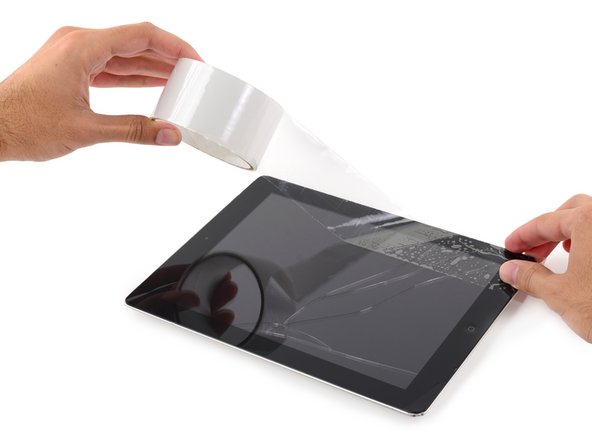








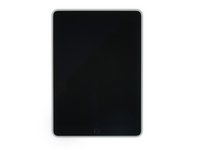
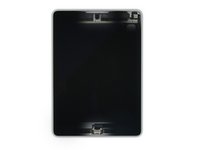
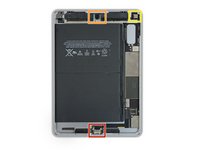




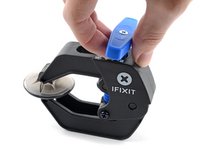





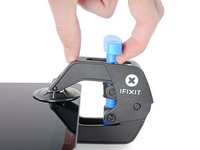
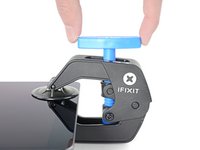
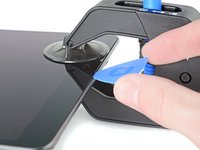







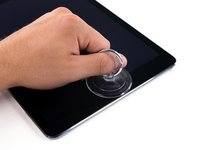
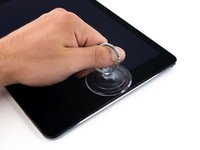
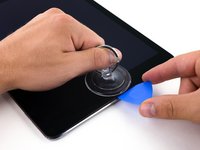



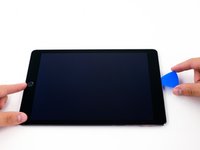
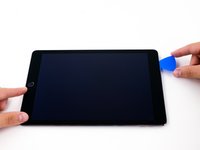
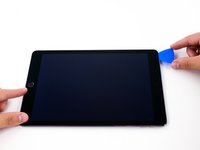


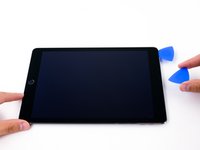
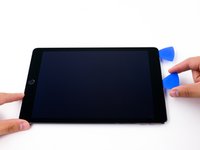



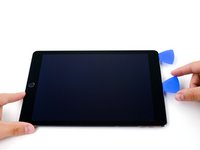
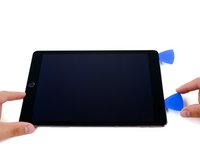



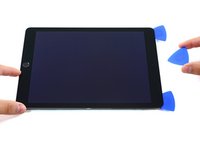
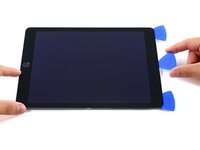



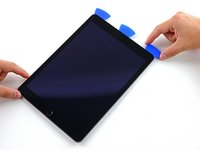
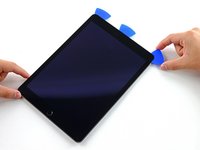




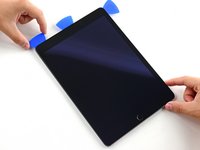
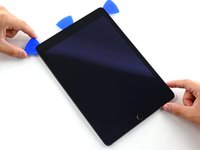
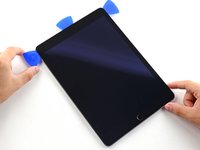




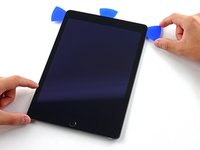
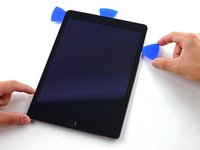
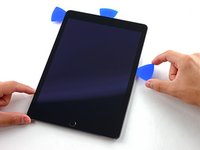




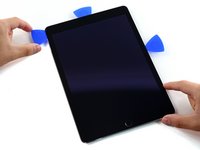
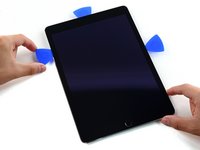
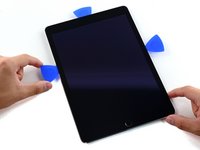



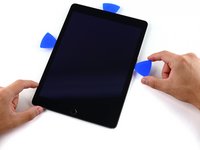
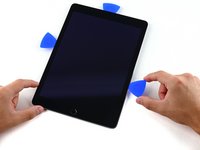
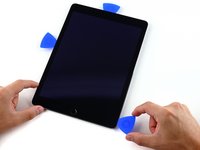




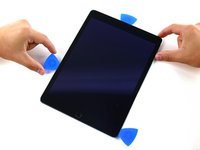






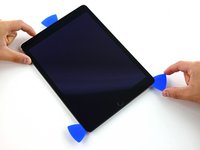
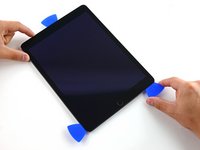



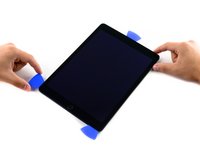

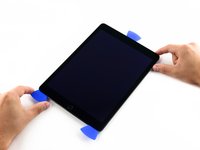


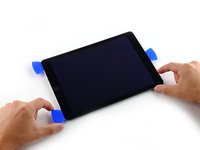
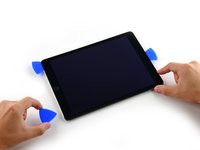



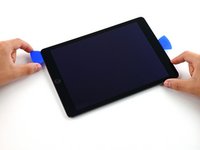
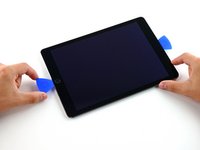
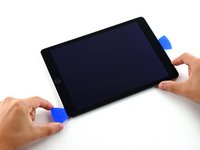


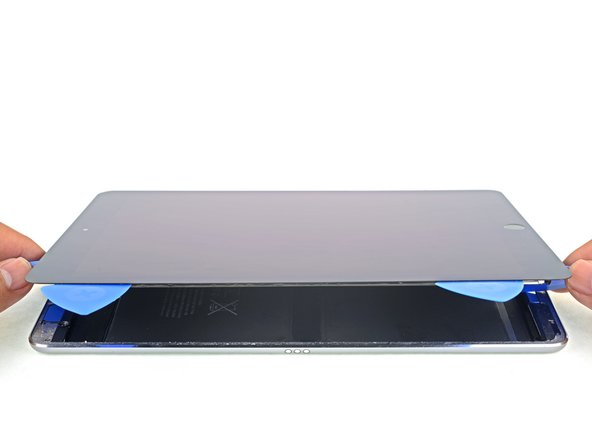














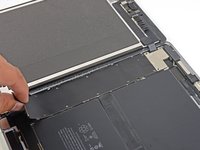
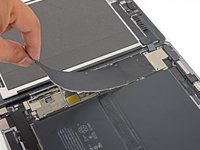
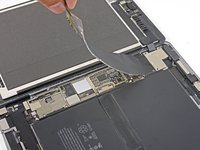




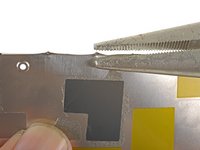
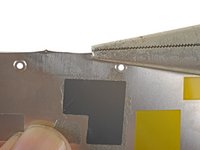
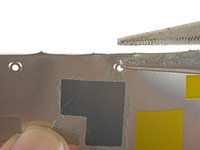

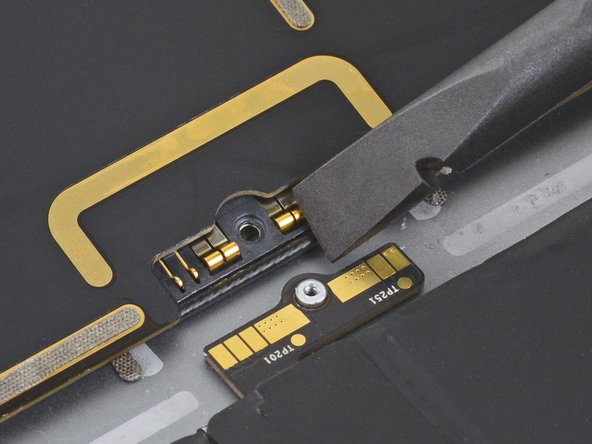
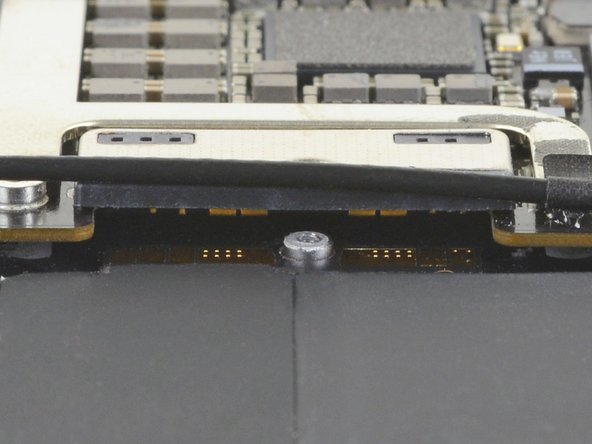
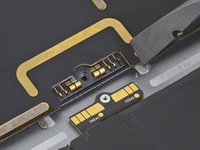
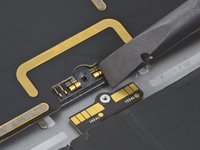
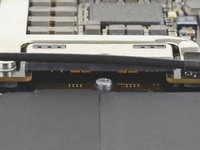

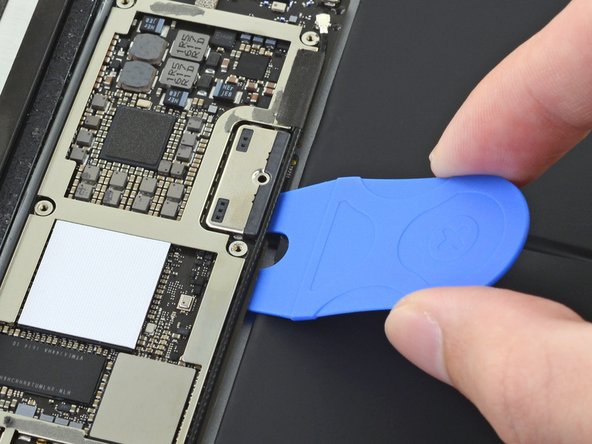
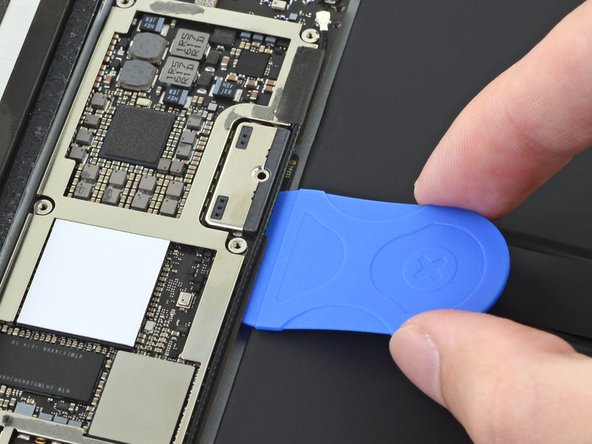
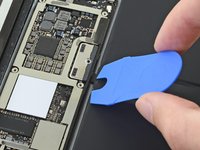
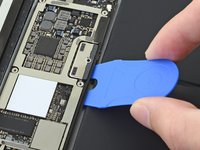
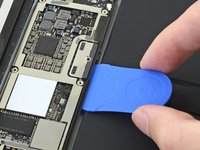


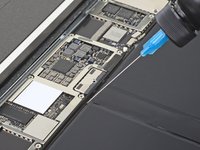
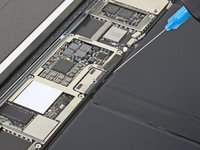






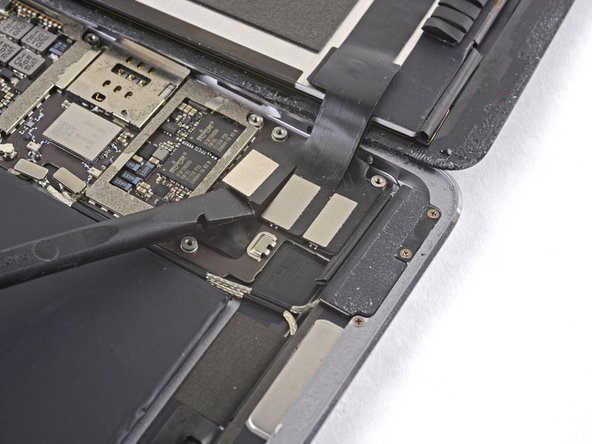
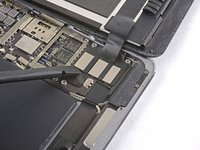
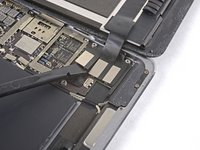

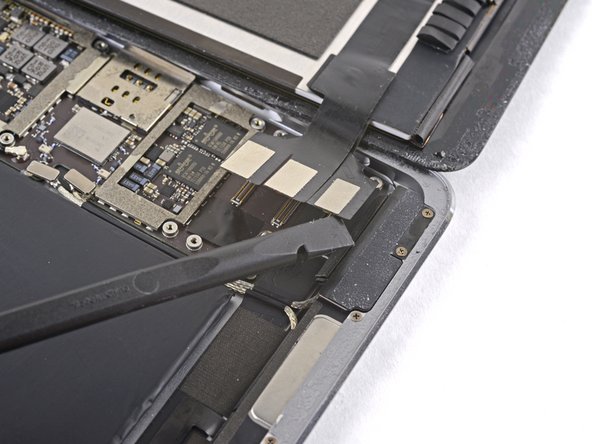
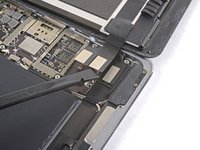
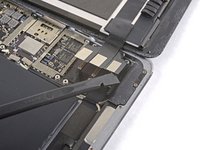

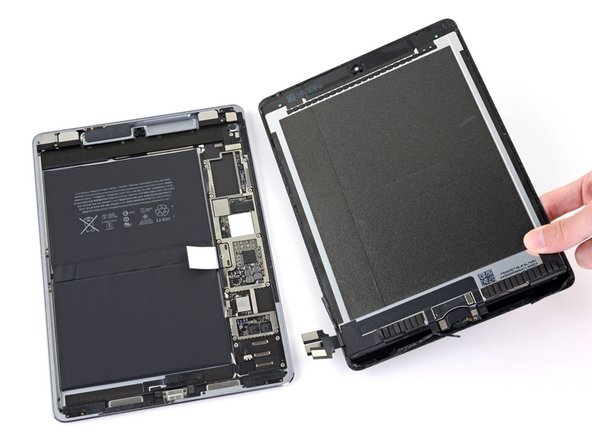
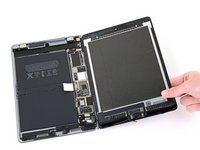
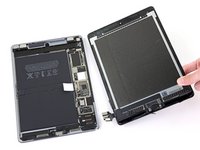

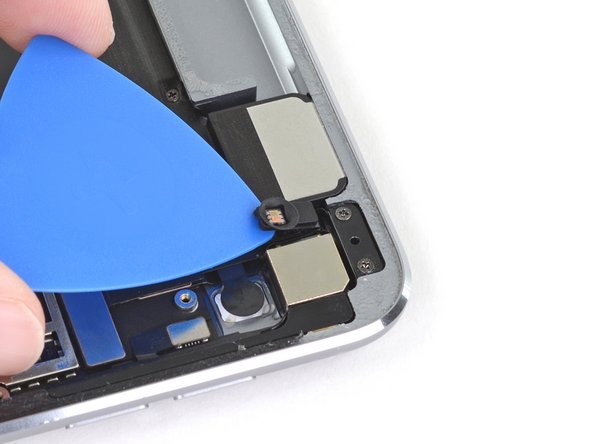
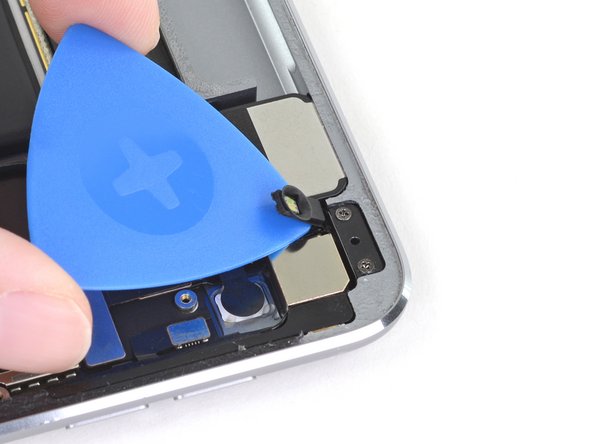
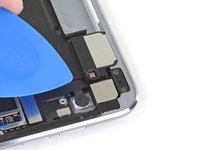
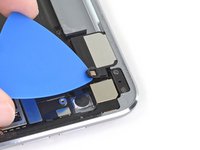




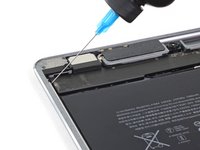

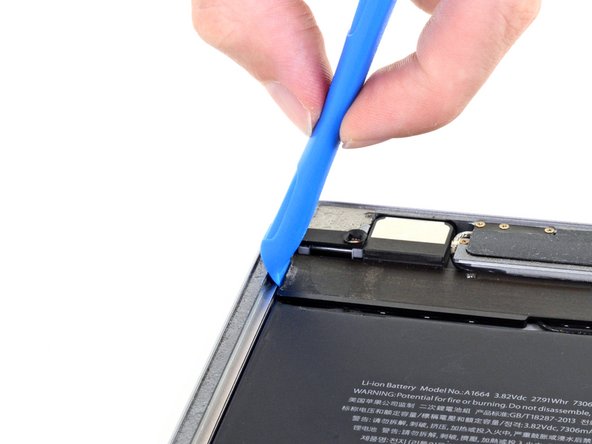

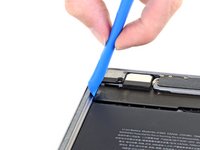
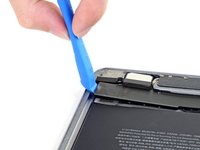

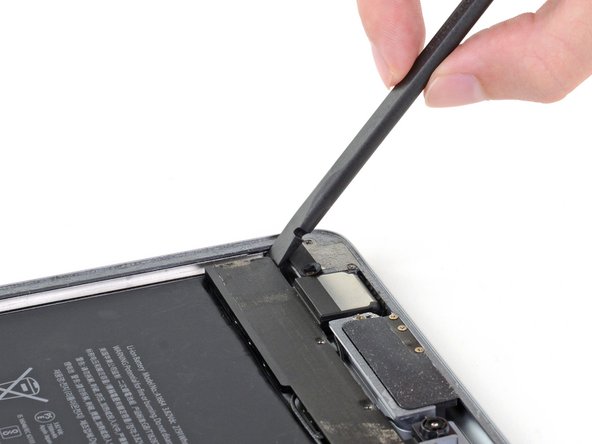
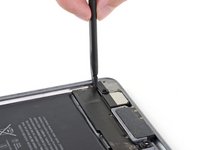
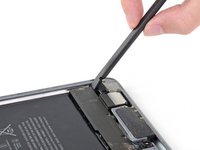



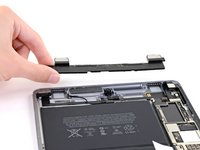

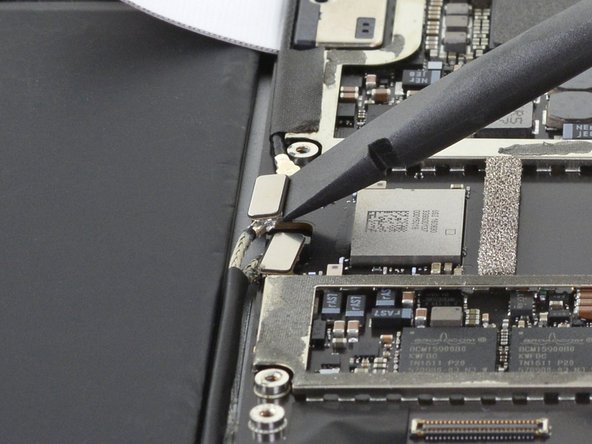

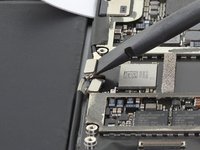

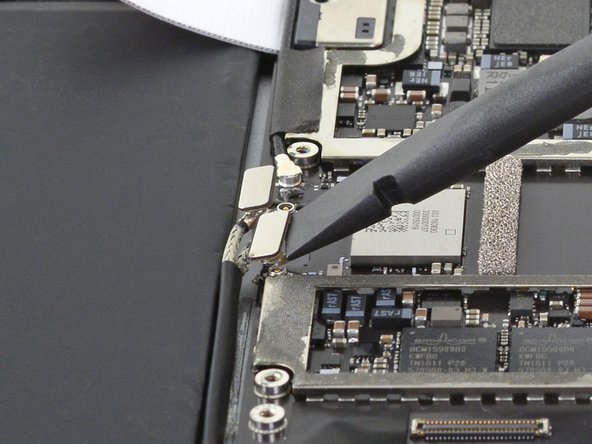
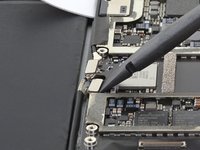
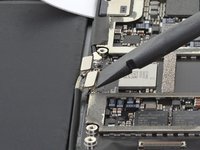

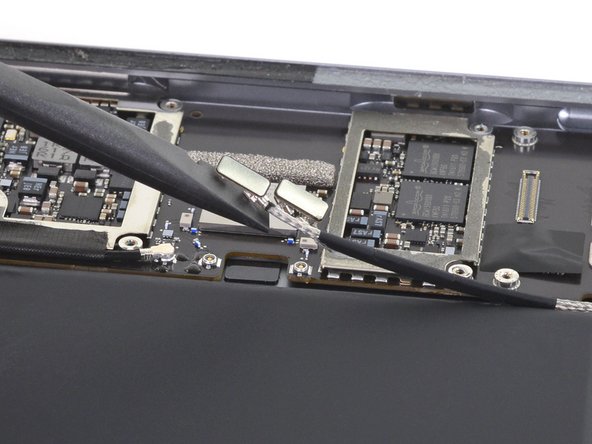
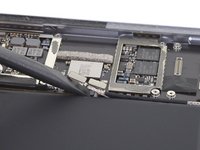




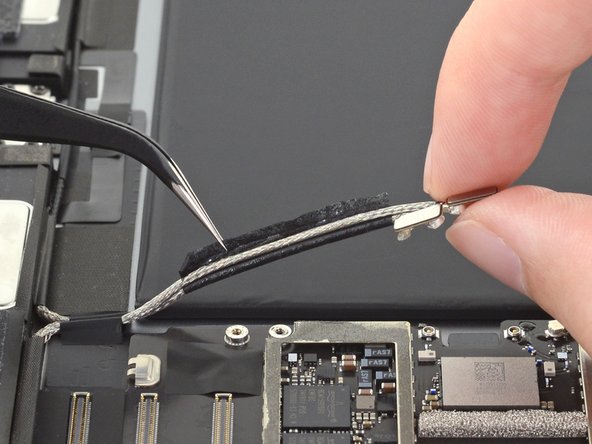
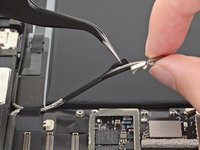
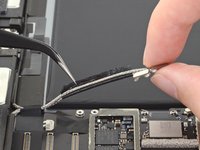

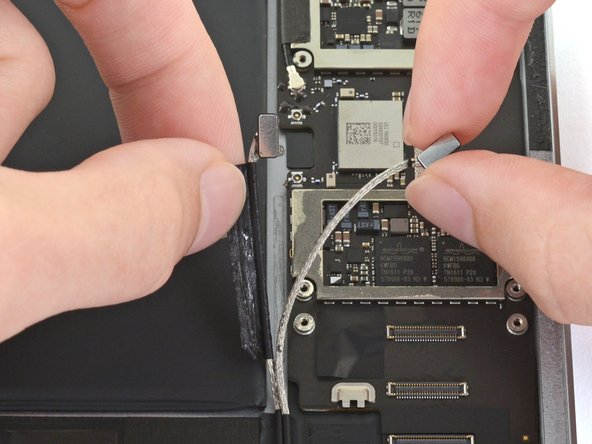

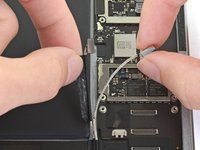

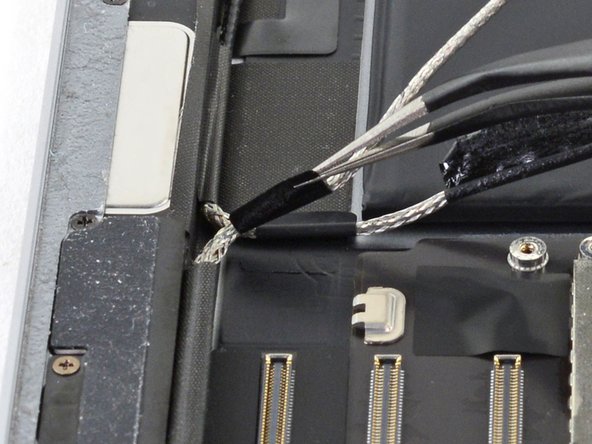
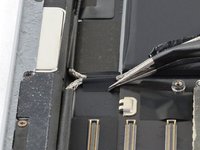
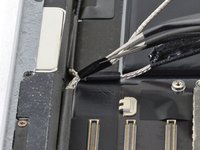

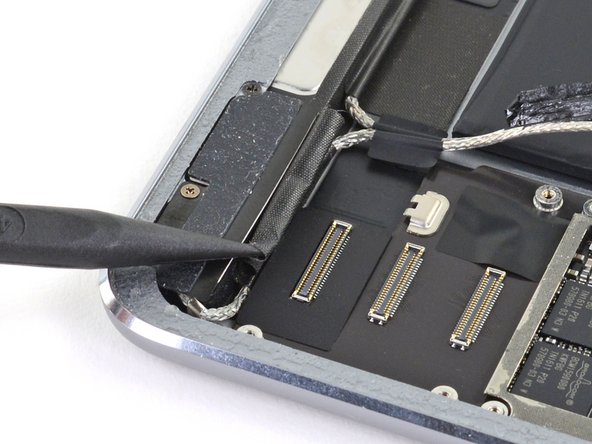
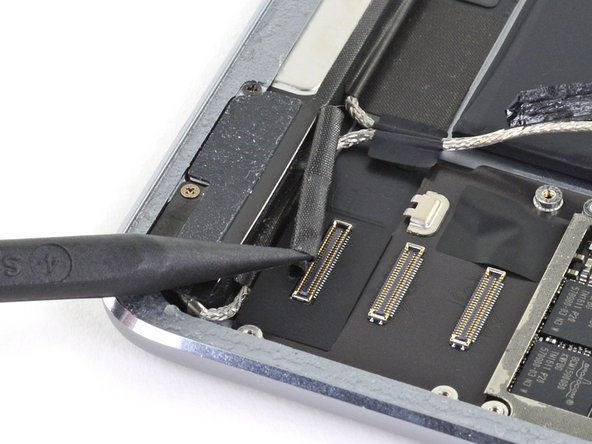
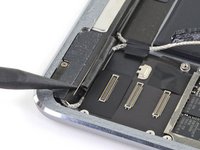




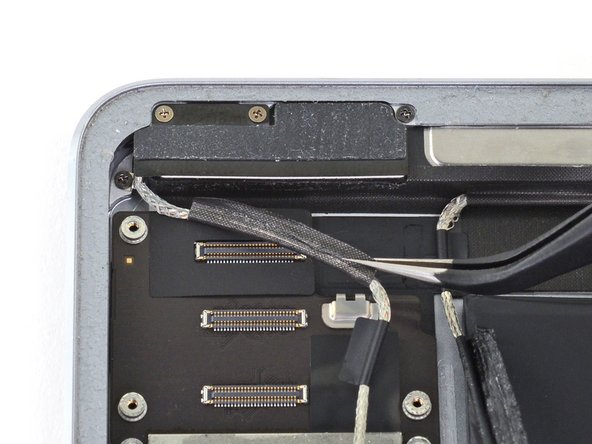
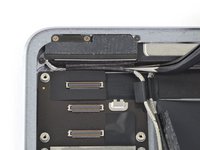

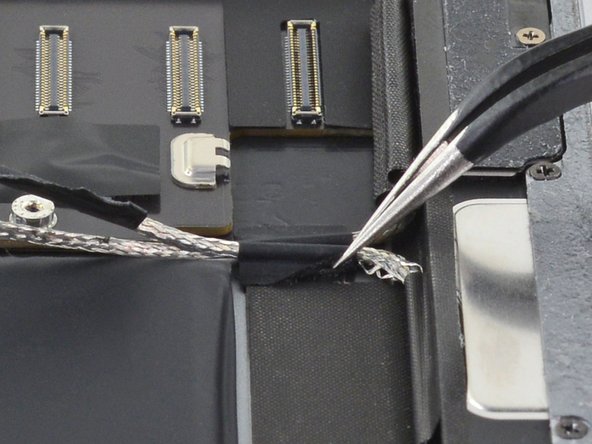

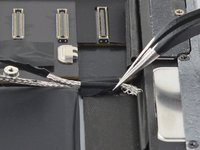


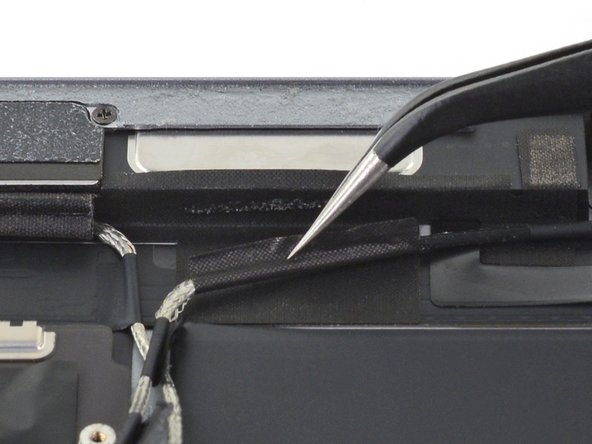
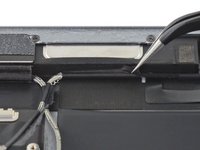
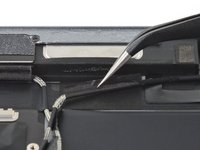

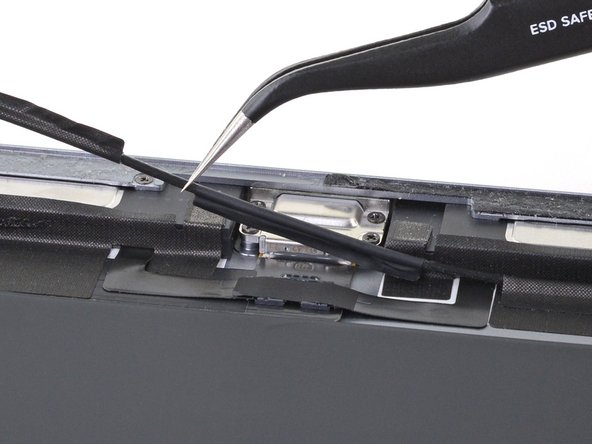
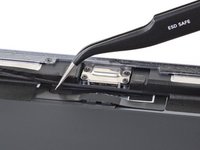
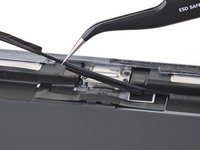

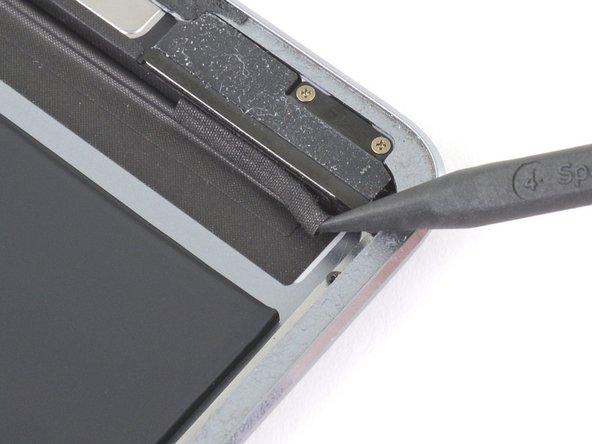

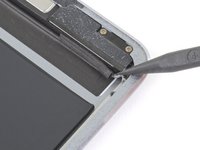
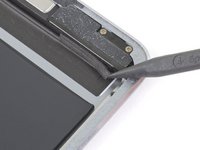
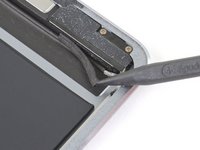


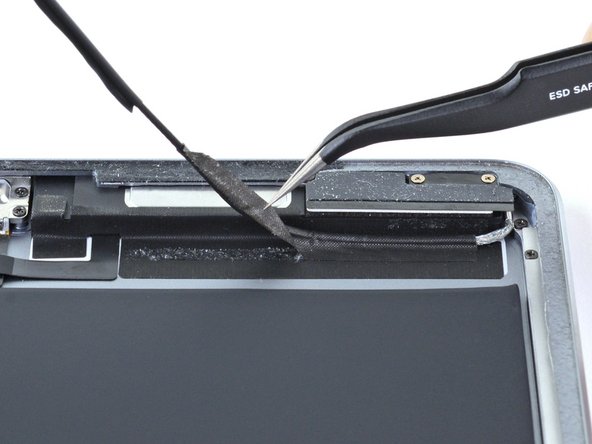
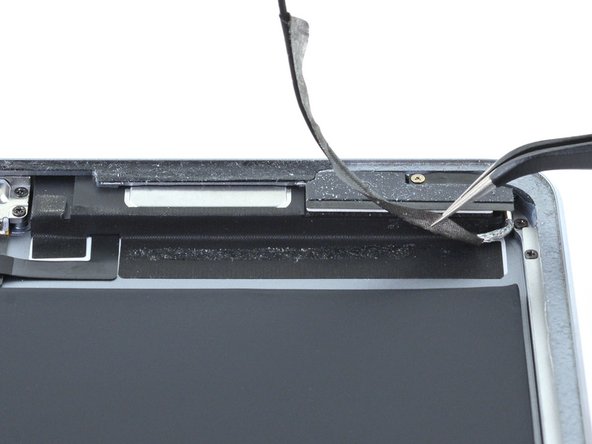
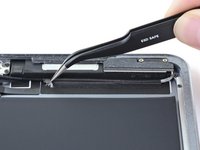
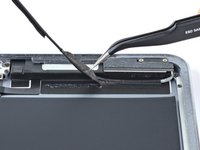
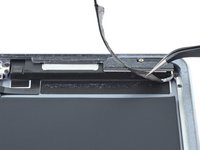


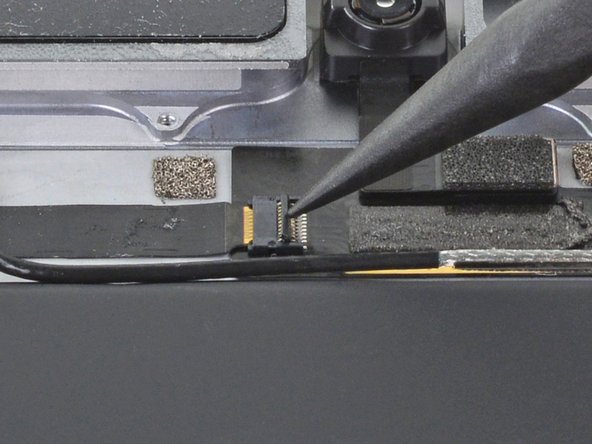
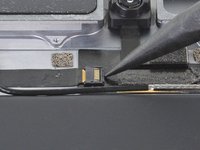
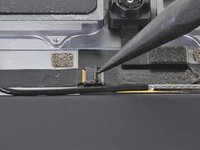
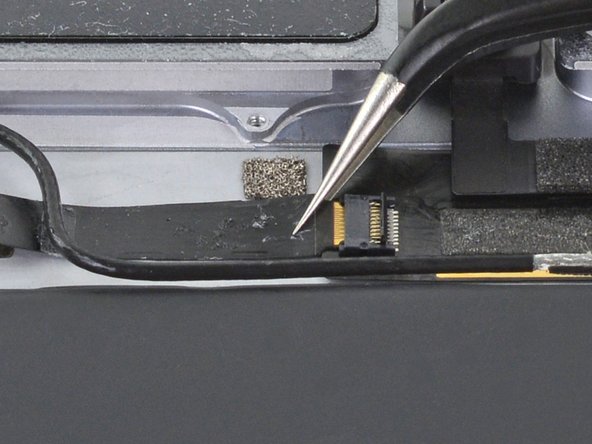

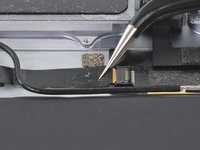


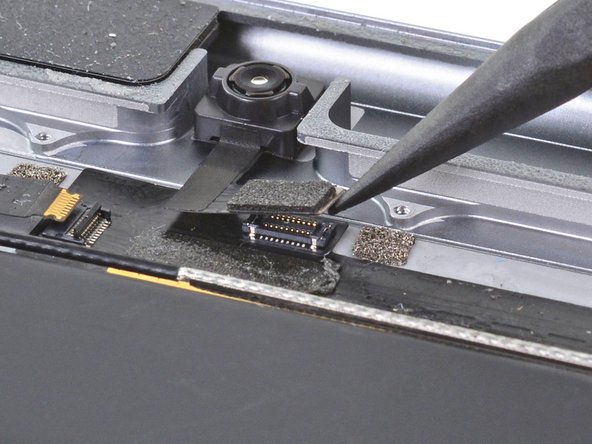
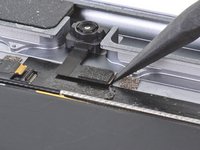
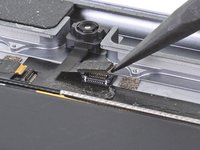

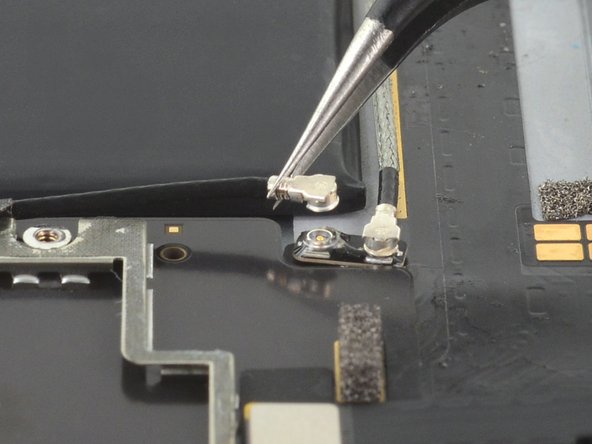
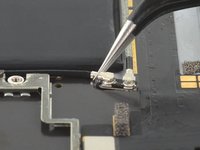
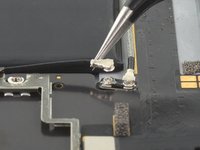

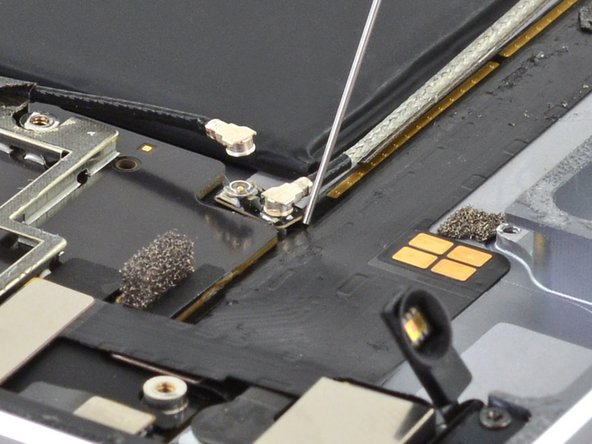
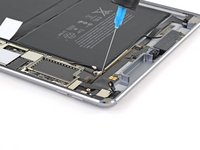
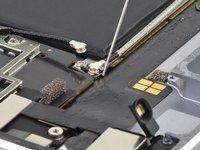



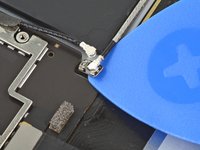


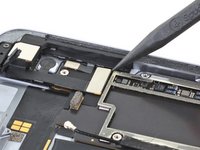
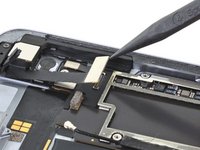

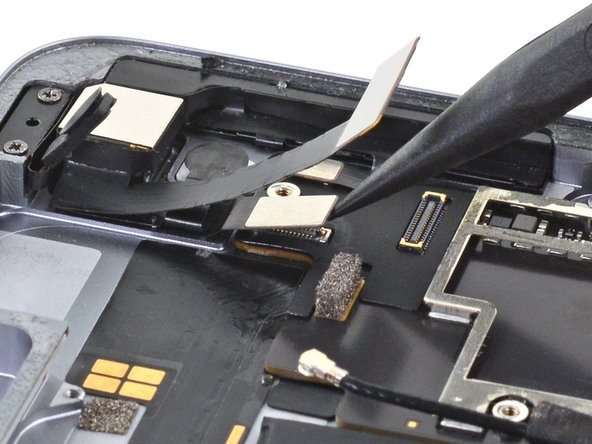

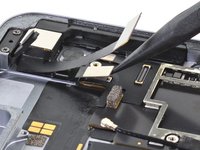

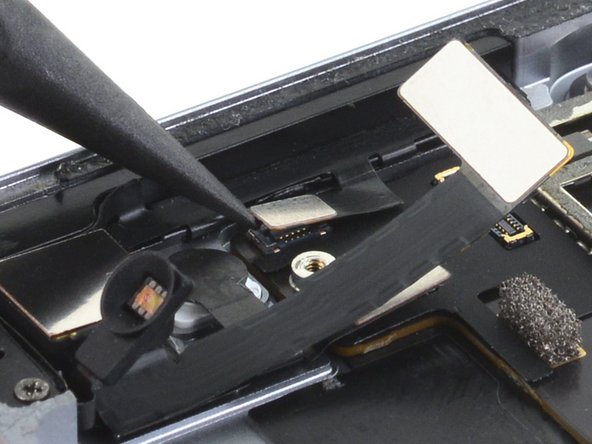
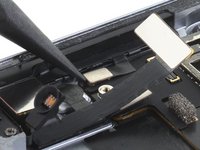
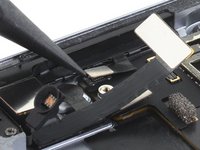

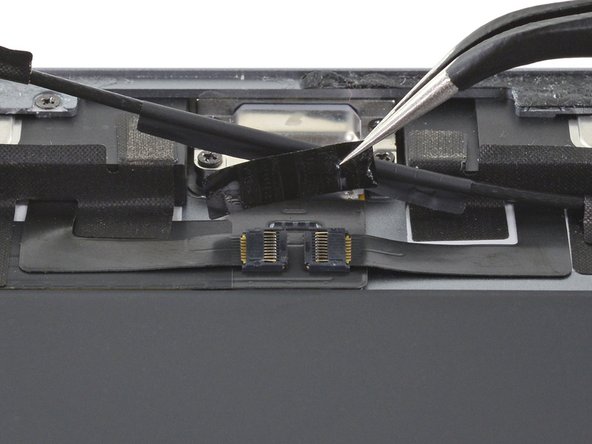

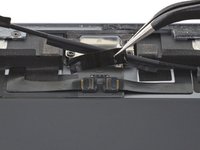

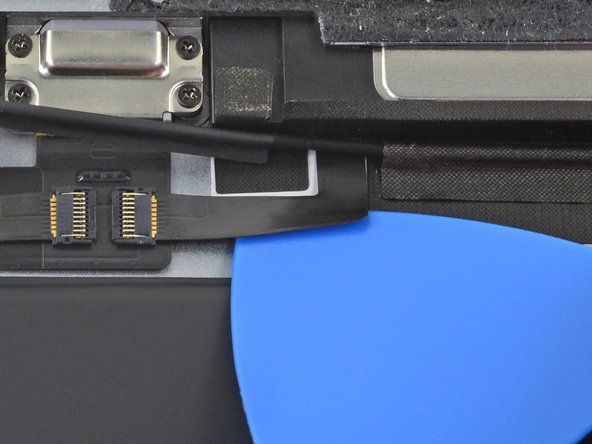

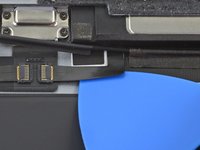

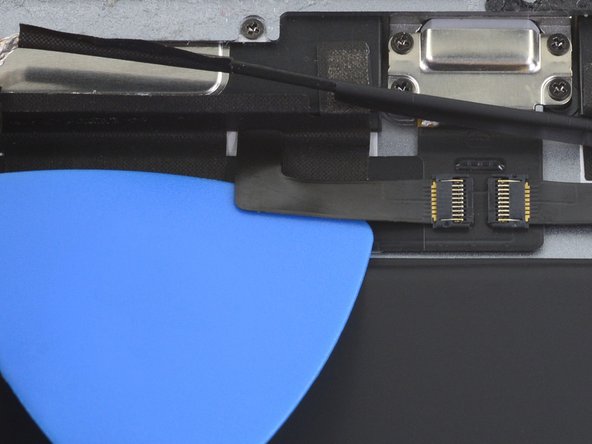
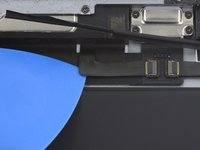
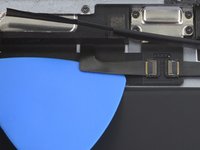

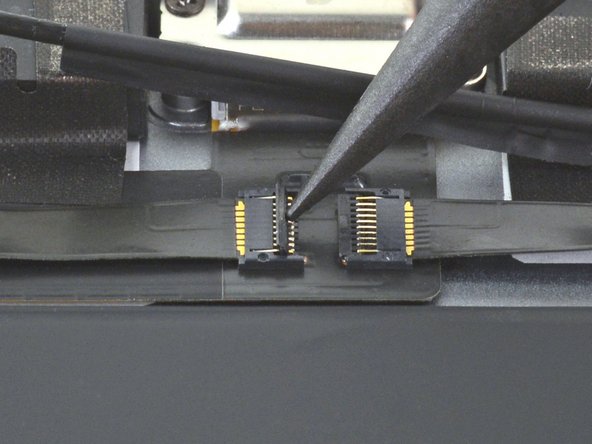
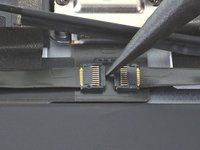


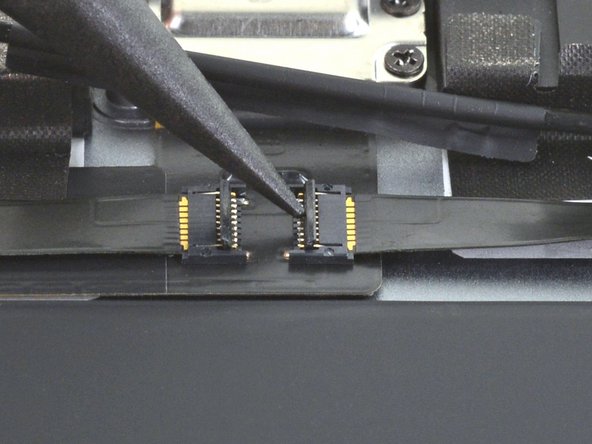
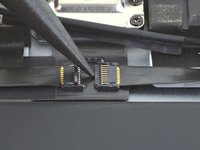
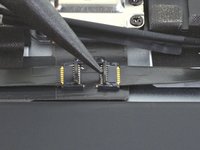

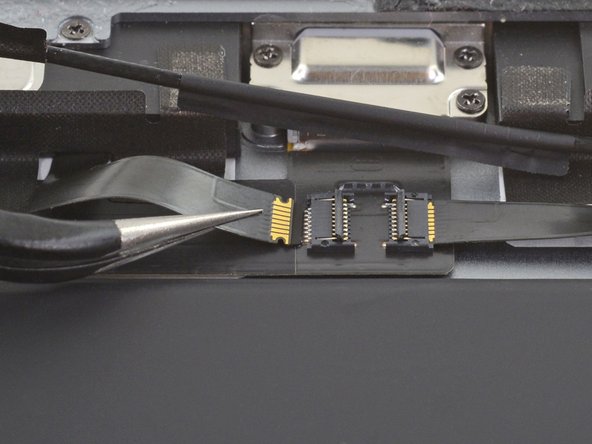
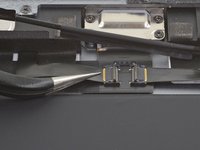
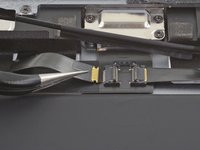

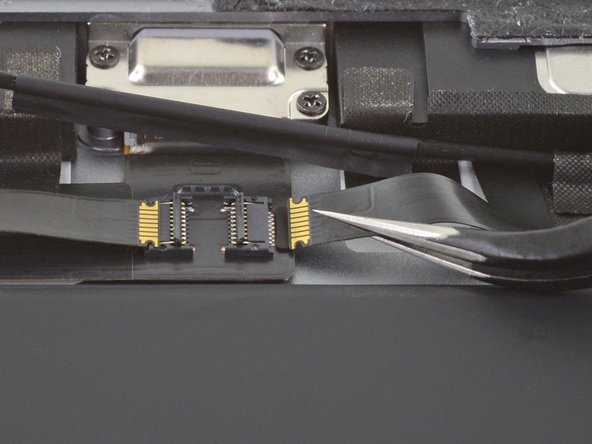
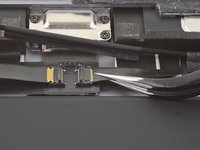
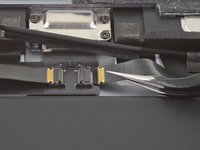


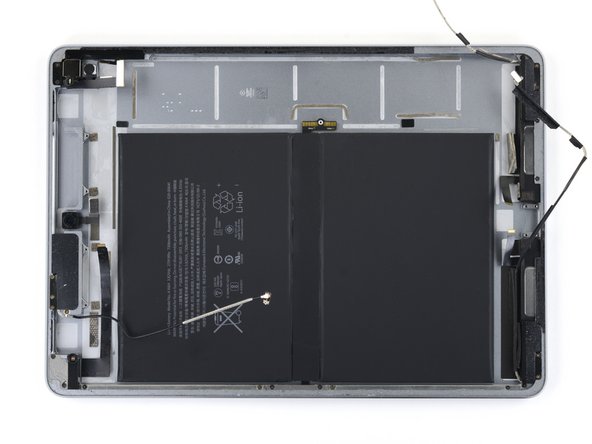
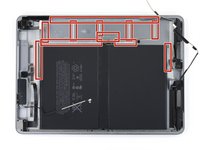
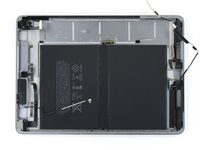

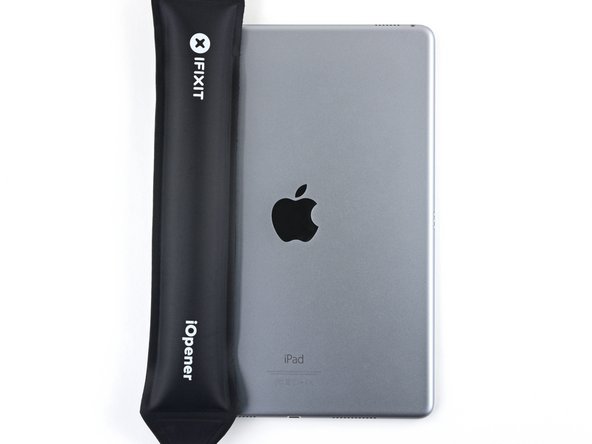
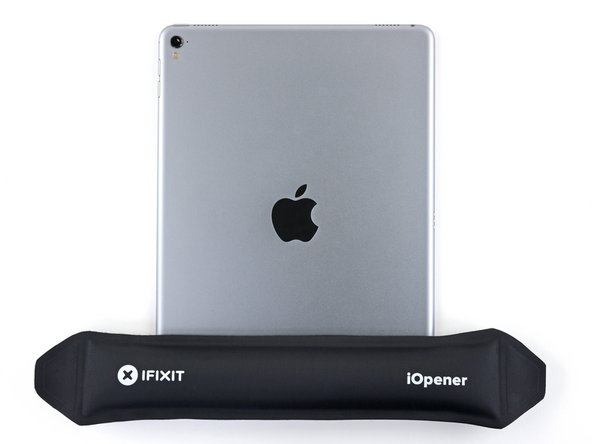
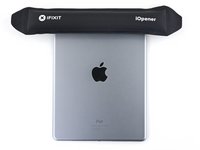
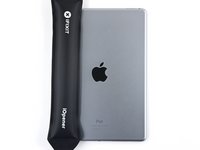
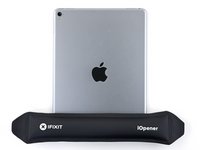

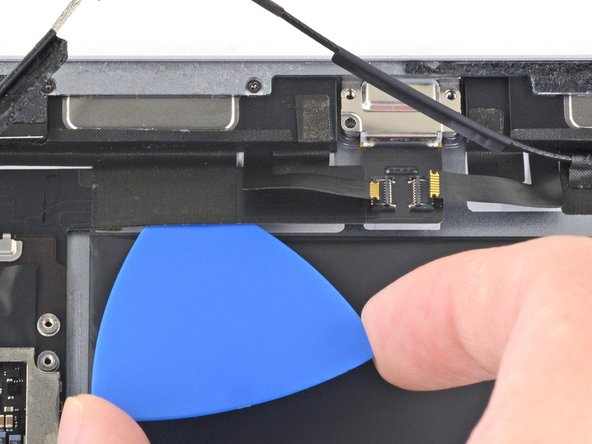
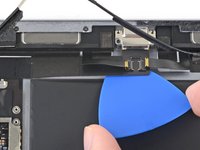
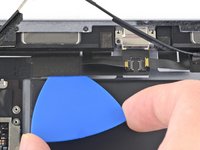

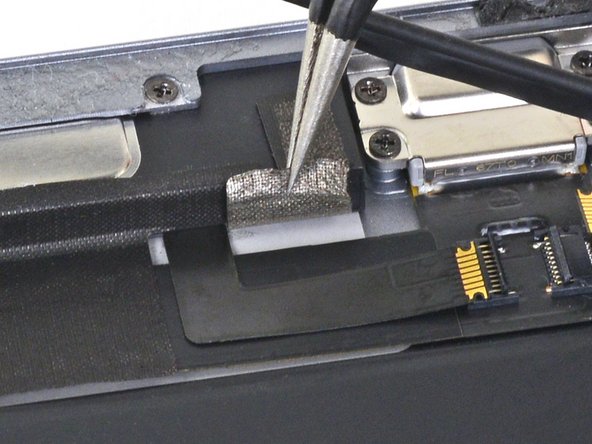
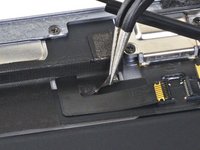
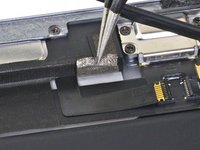
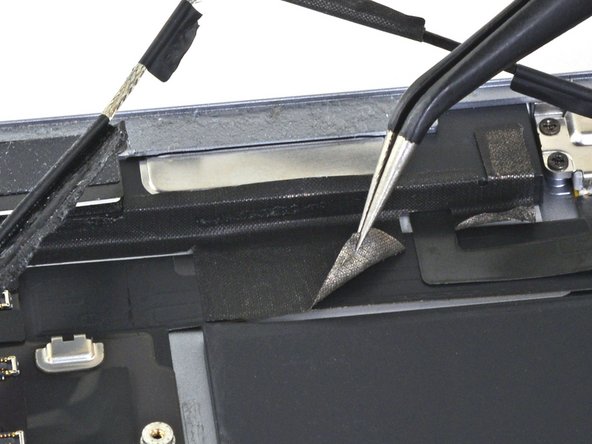
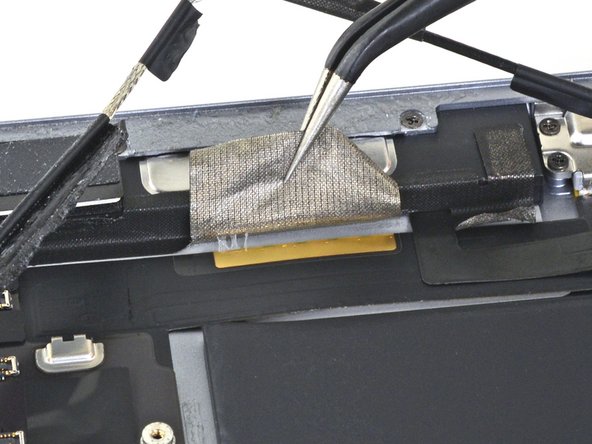
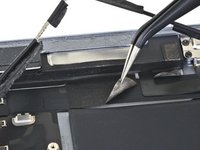


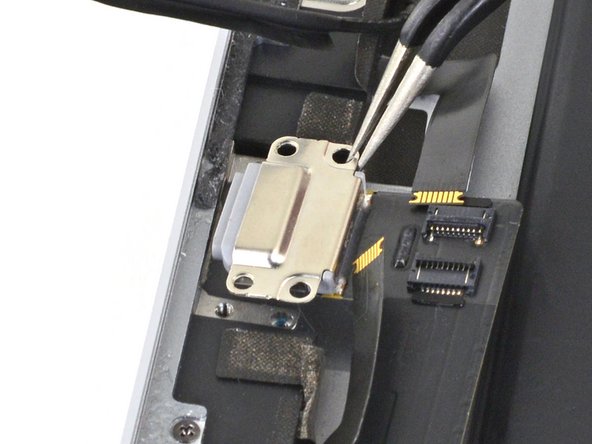
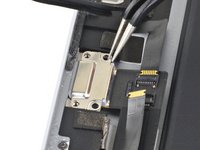



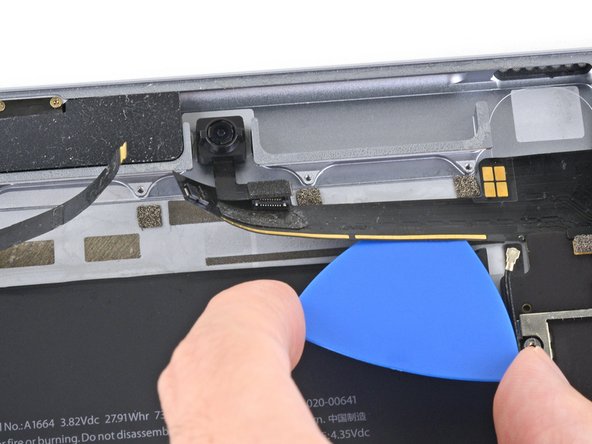
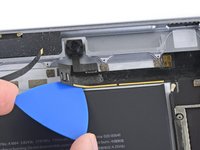
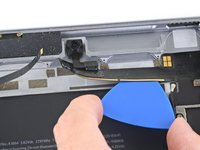



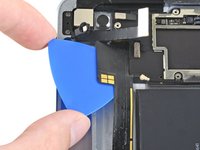

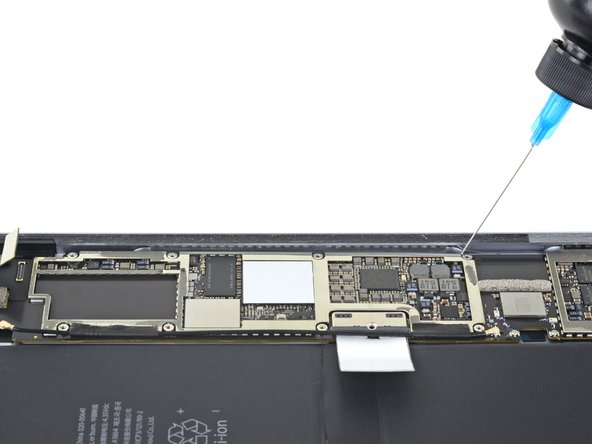
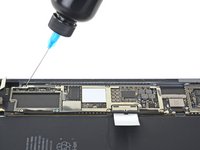
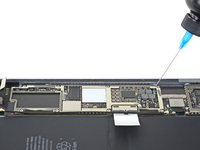

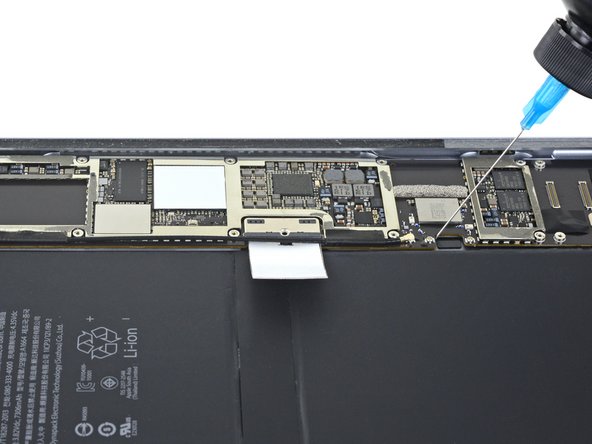
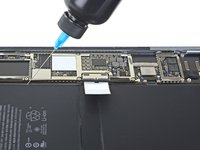


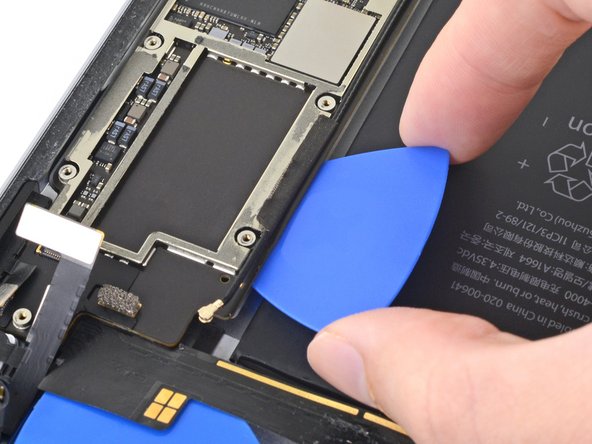
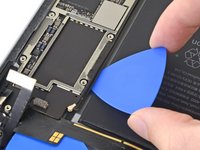
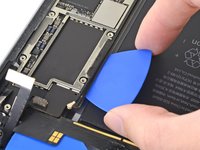


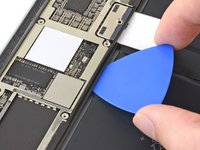
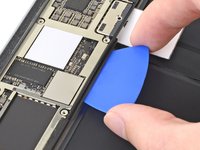

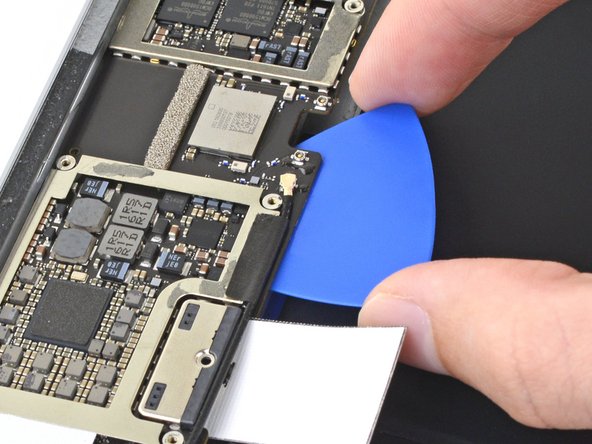
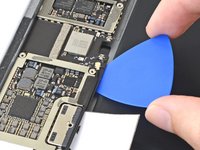
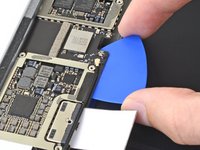

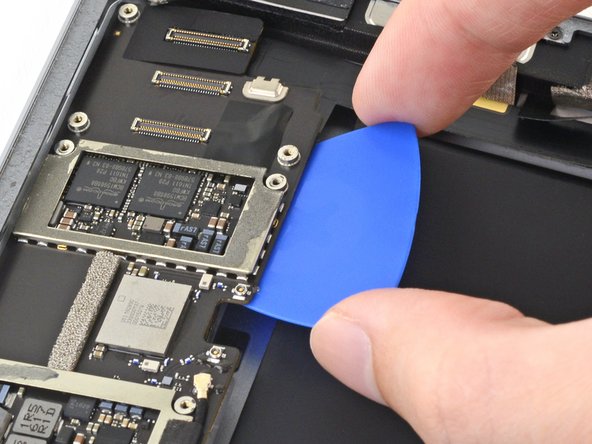
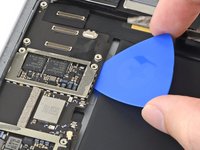
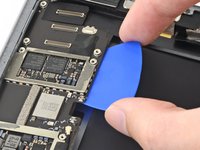

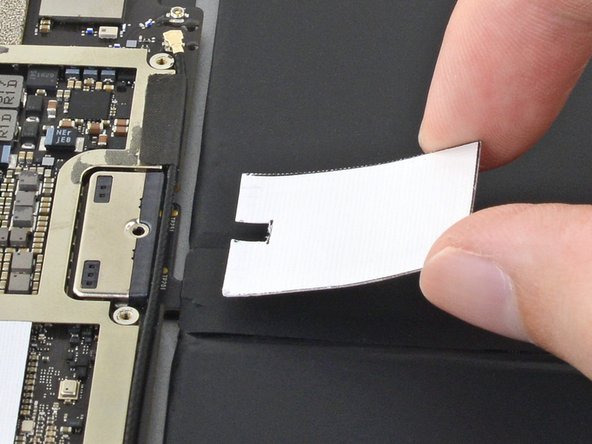
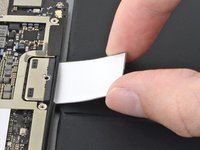
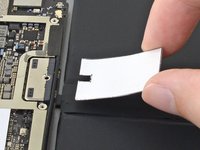

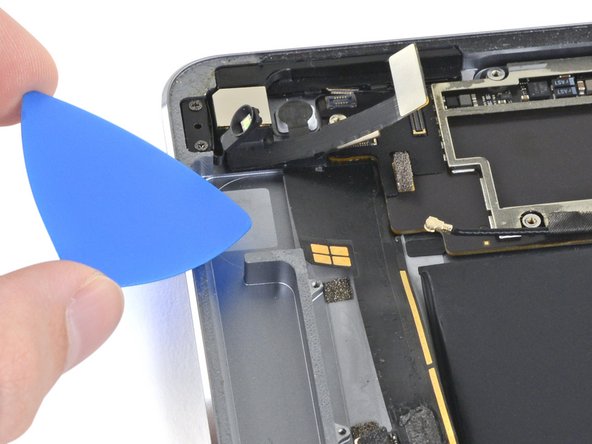
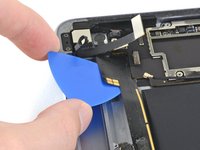
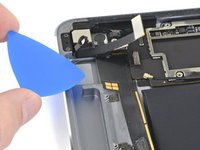

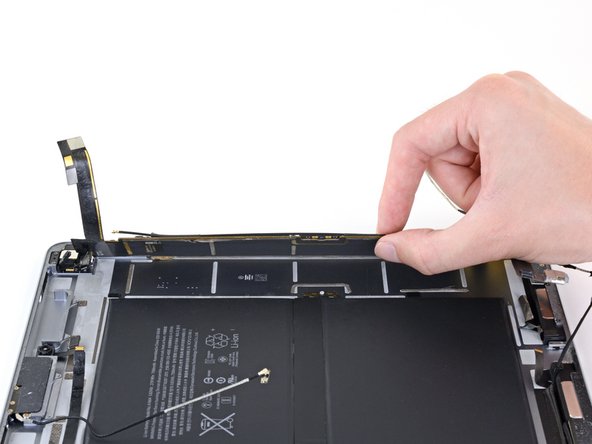
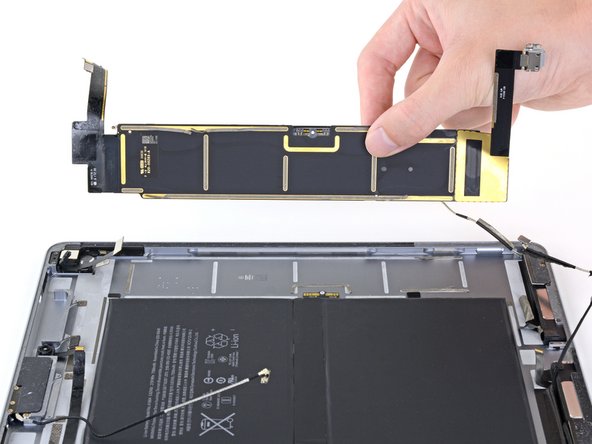
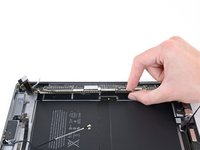
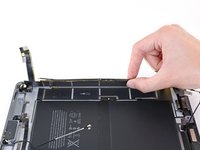
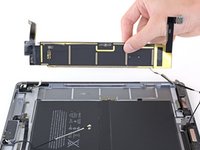


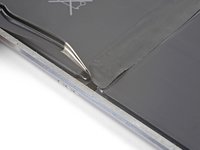
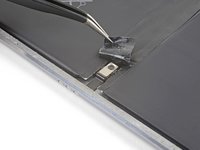

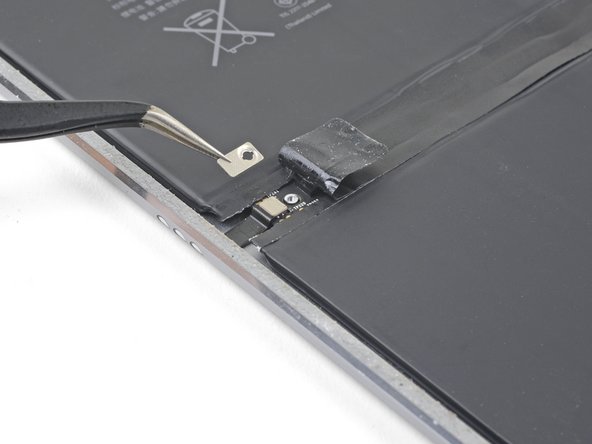
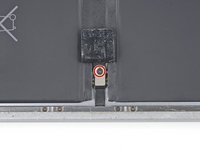
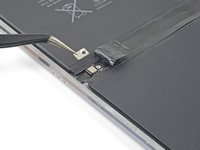

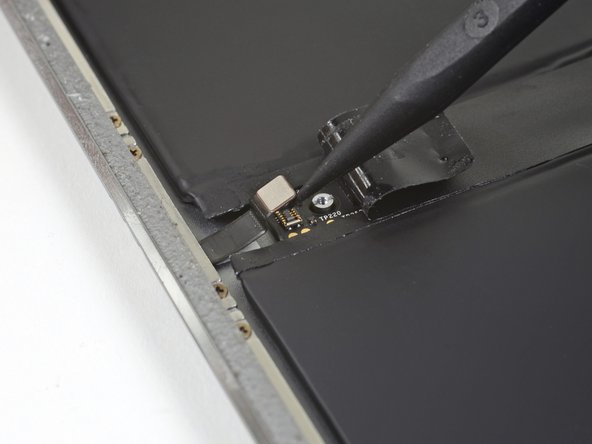
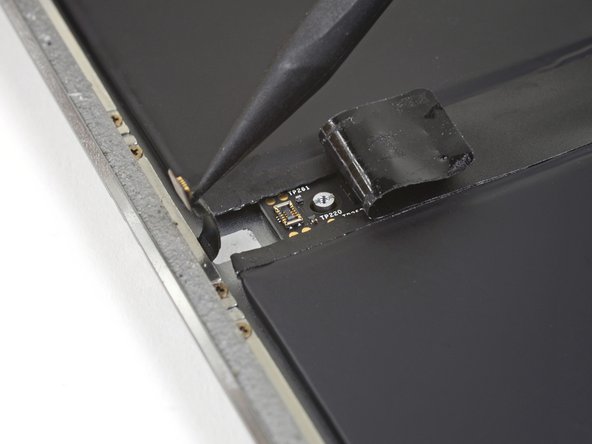
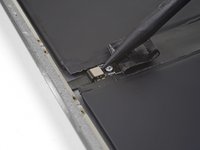
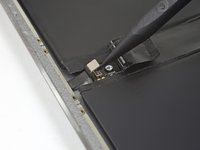
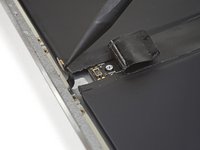
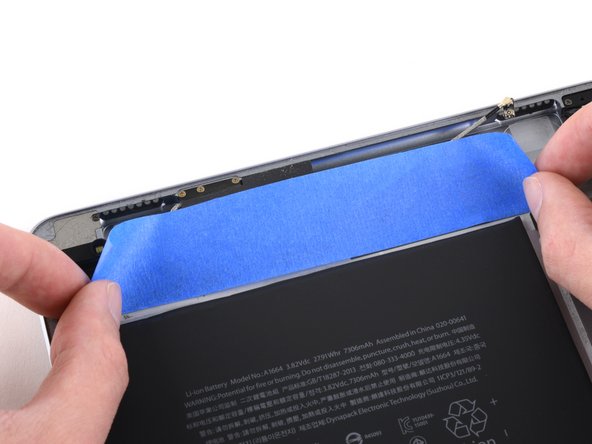


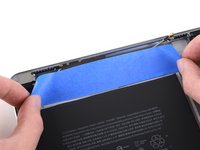
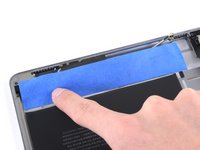
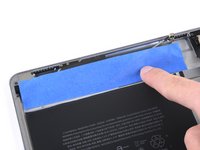

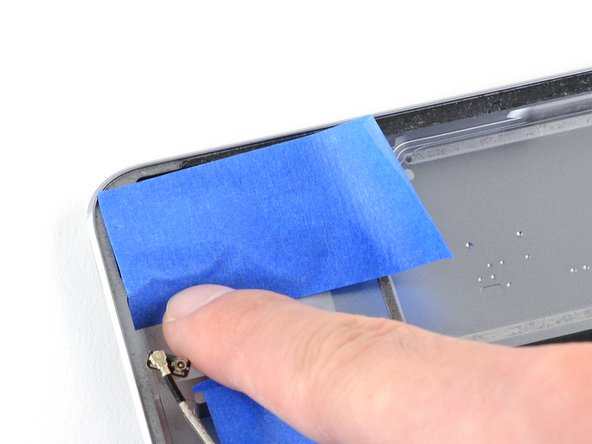
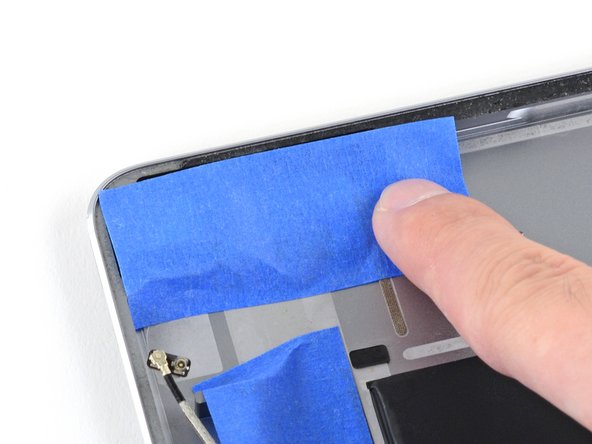

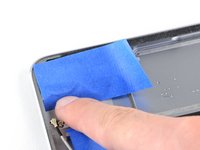
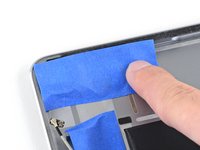

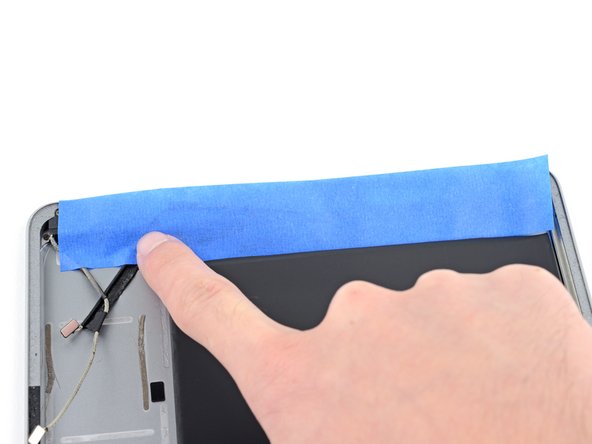
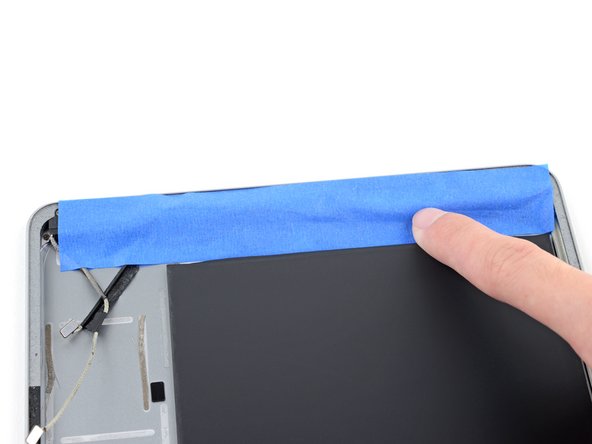
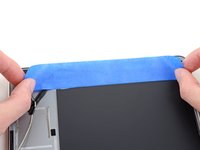
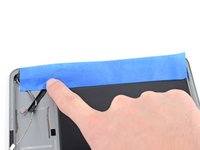
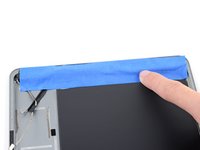

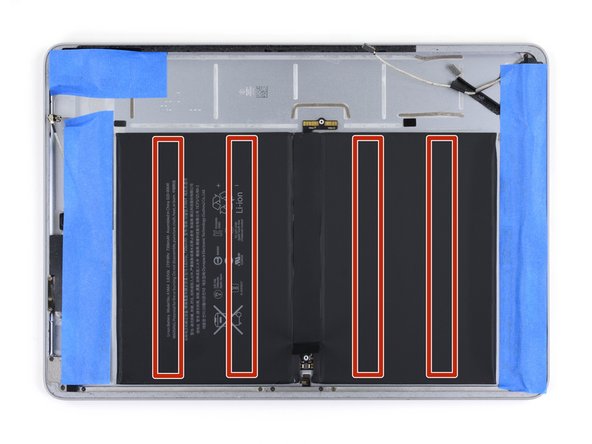



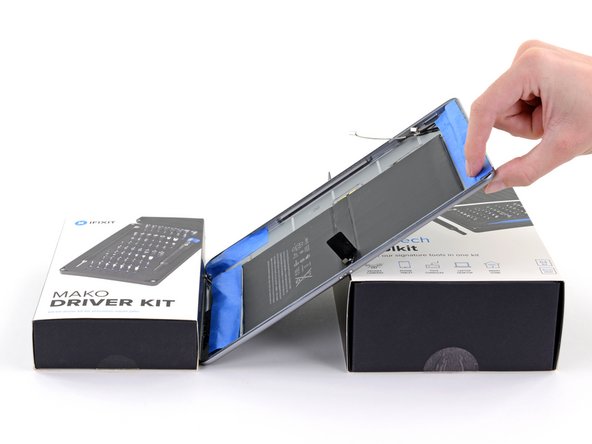
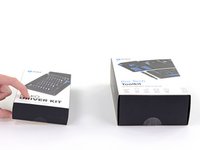
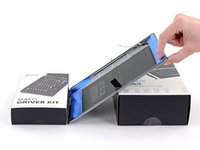


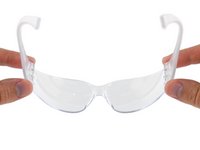




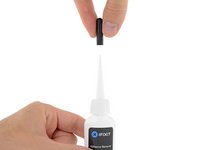
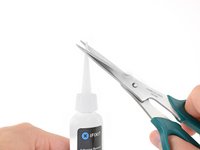
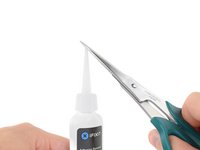




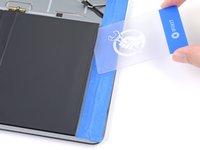
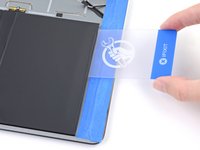
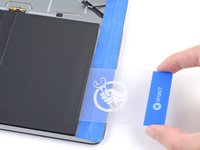


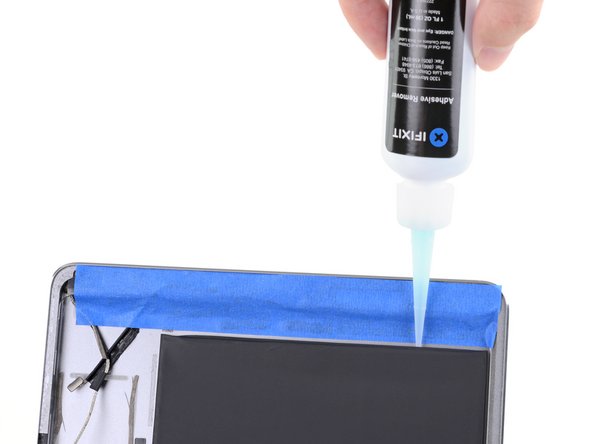
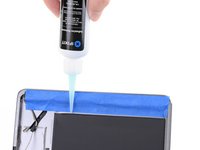
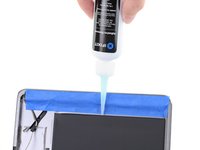
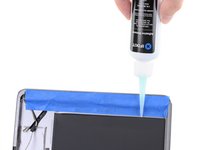




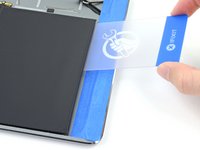
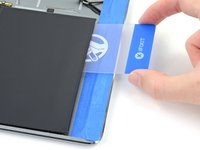
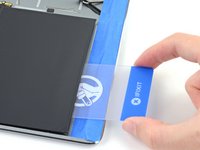

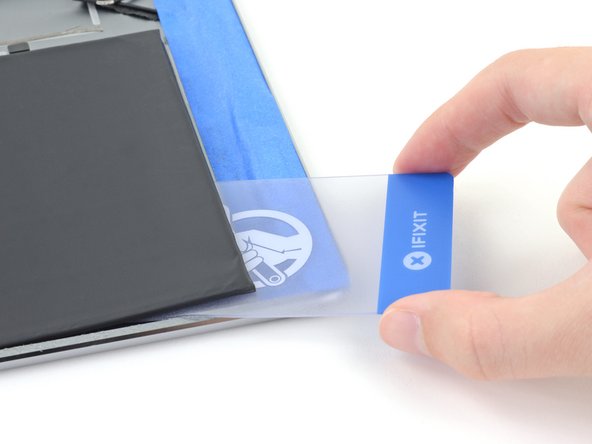
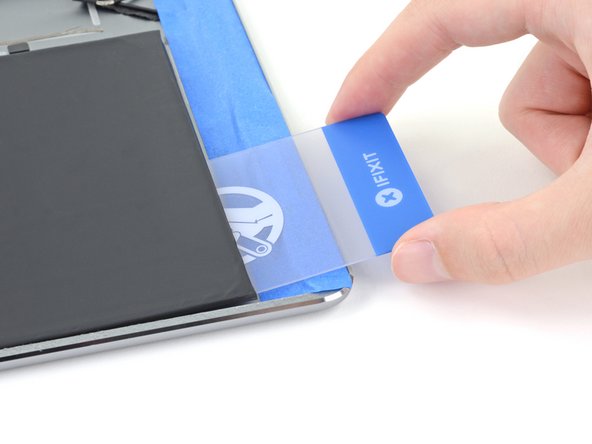
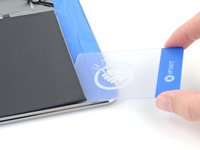
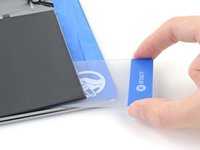
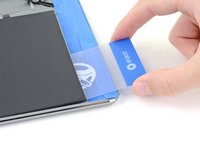

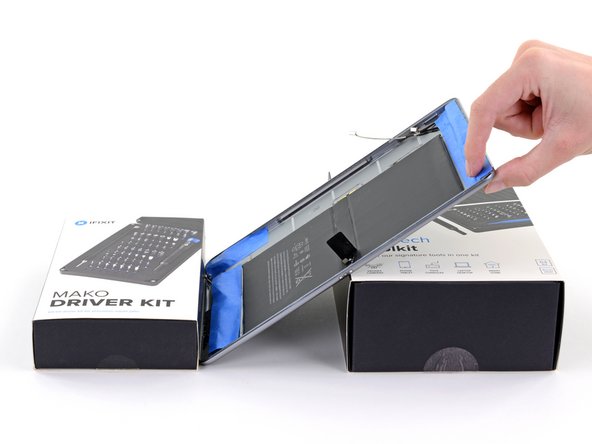
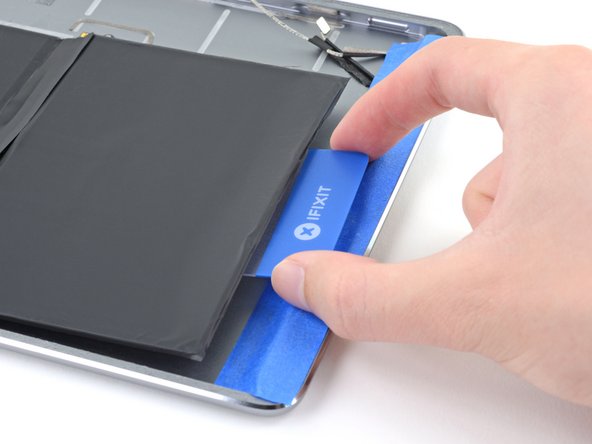
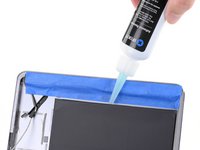
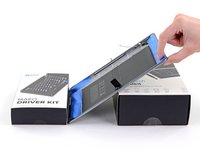
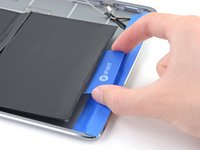

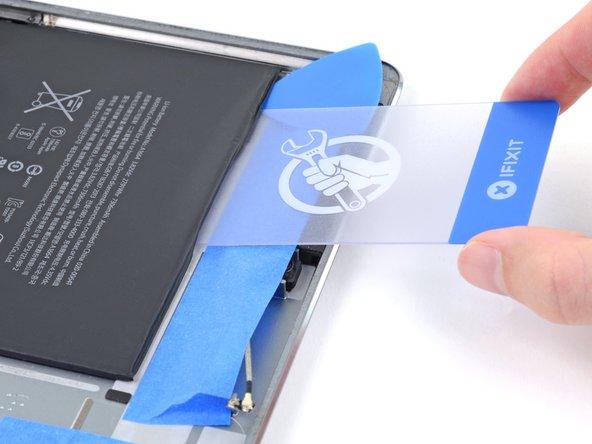
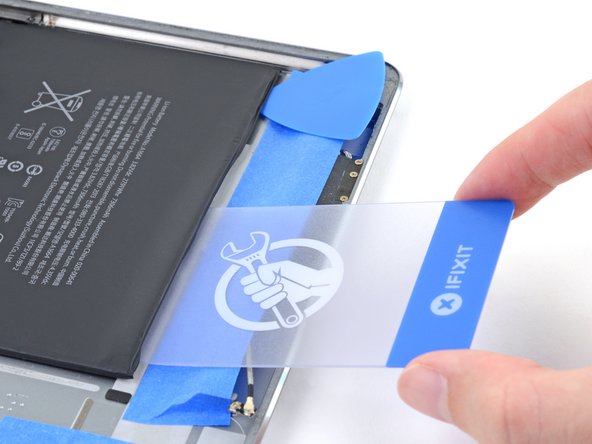
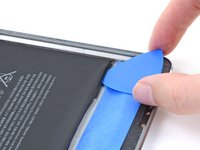
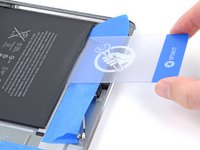
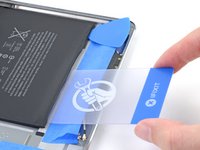

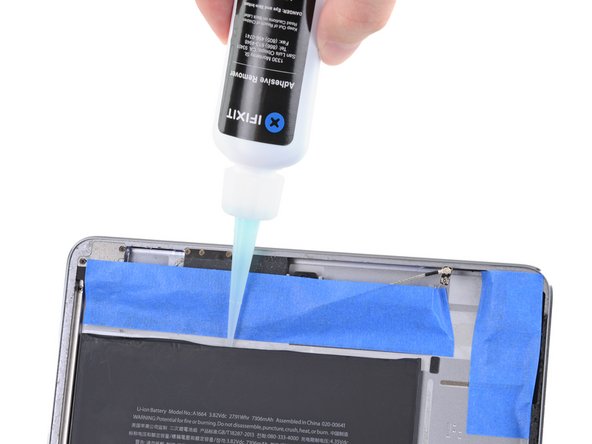
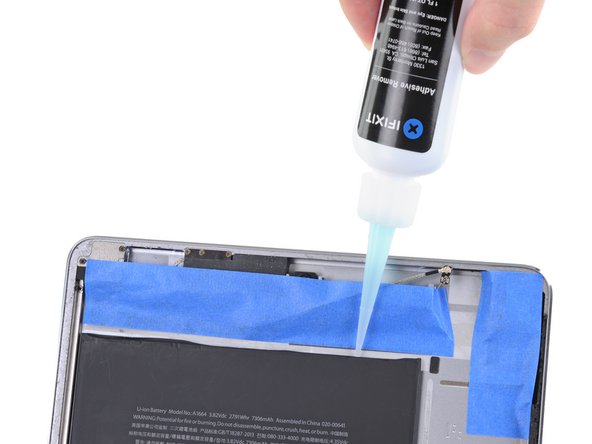
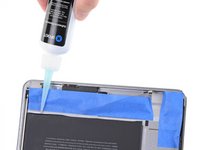
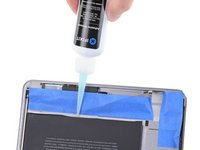
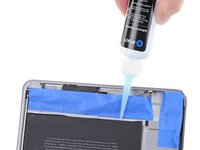


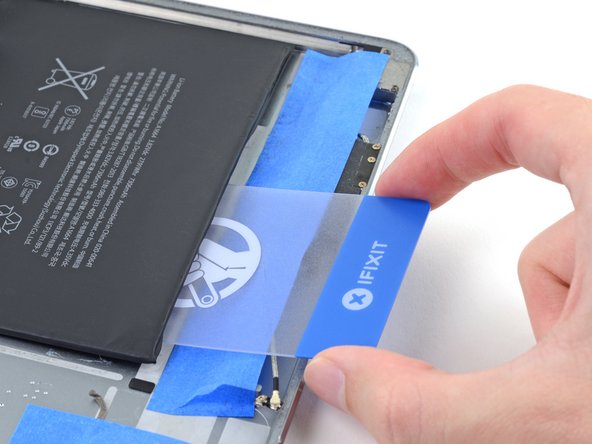
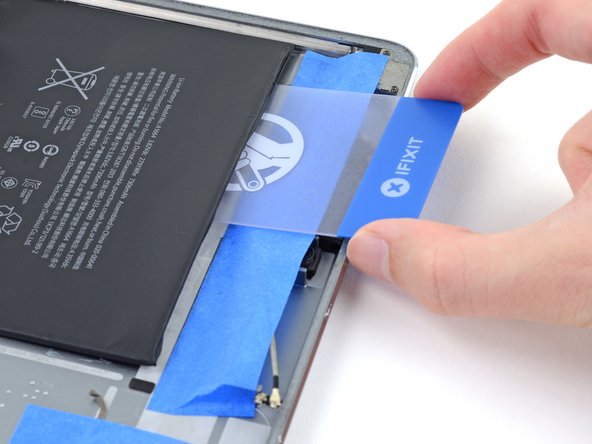
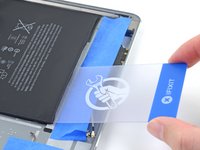
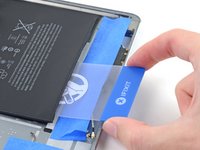


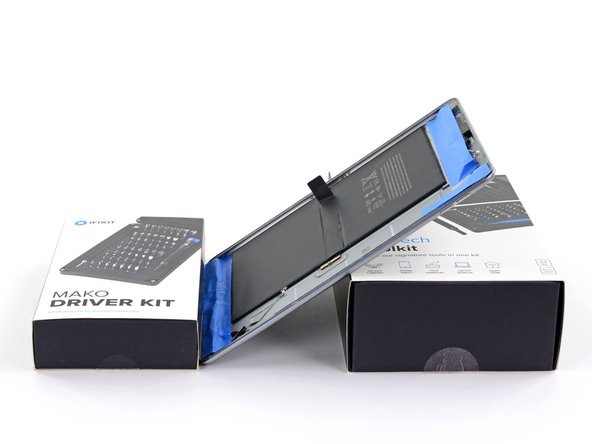

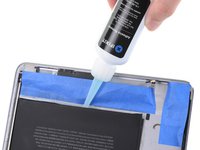
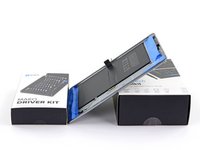
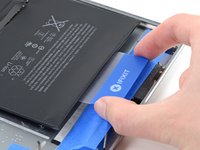

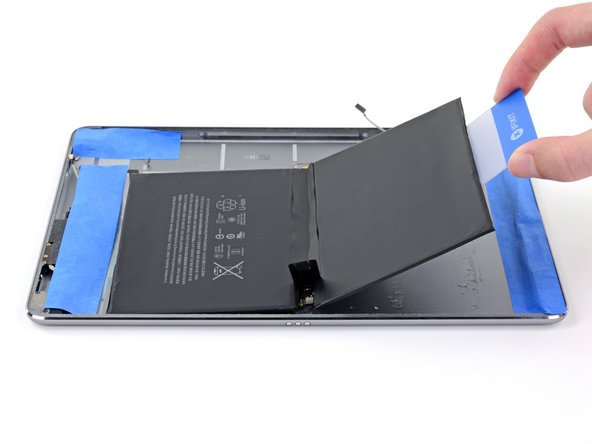
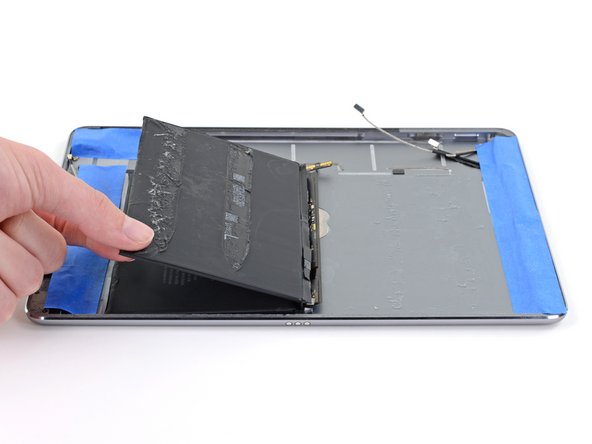
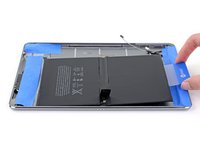
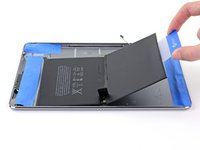
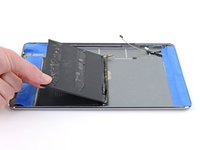

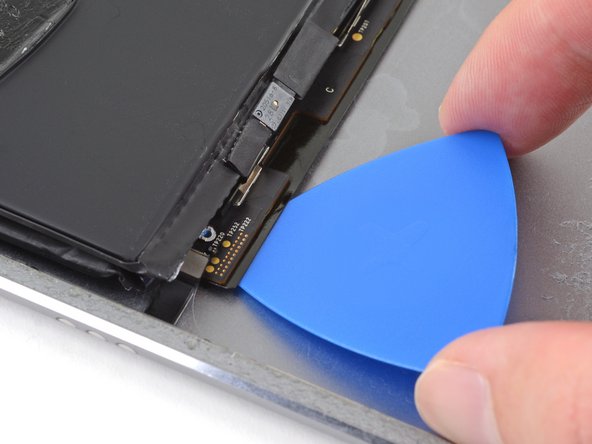

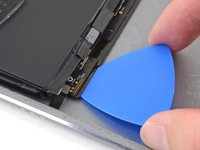

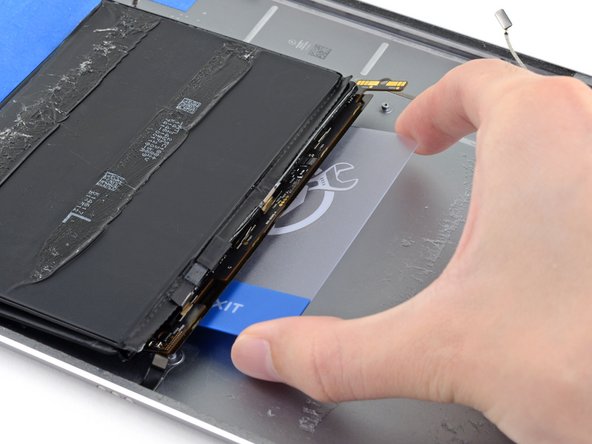
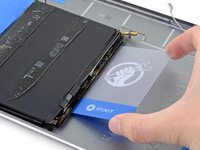
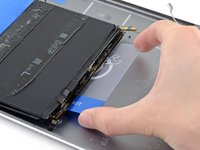



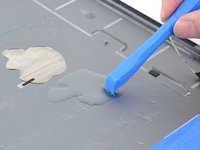
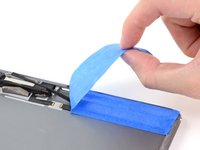

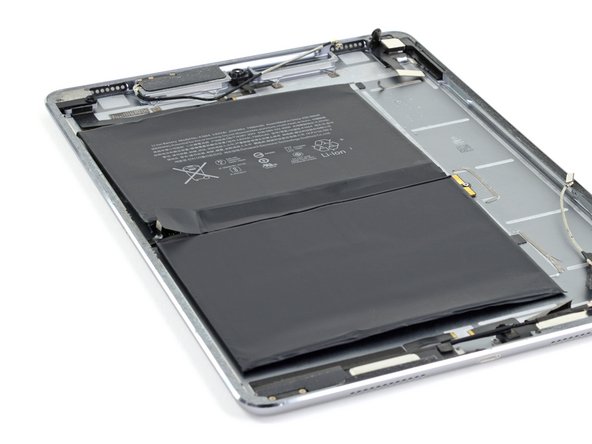
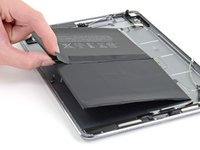
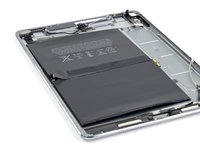


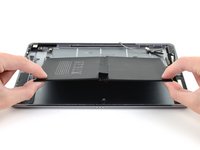


My iPad Pro 9.7 wifi only has no pinhole for sim card
Michelle - crwdns2934203:0crwdne2934203:0
You’re right! The Wi-Fi only model does not have a pinhole. Skip this step for your iPad.
Arthur Shi -